| Title | Image | Description | Notes | Tags | Collection | Image Set | |
|---|---|---|---|---|---|---|---|
| GN003:10_Stūpa |
 |
Gichi Nala 3:10 "Stūpa" (MANP 4, 2001: p. 211, pl. 71) https://katalog.ub.uni-heidelberg.de/titel/68214838 |
stūpa stepped base points hemispheric harmikā multiple umbrellas yaṣṭi sun aṇḍa-dome platform ornamentation chattra/chattrāvalī crowning element-varṣasthālī pennant |
Gichi Nala | GN003_10-11_IMG_0572 | ||
| GN032:4_Stūpa |
 |
Gichi Nala 32:4 "Stūpa" (MANP 4, 2001: p. 227, pl. 75) https://katalog.ub.uni-heidelberg.de/titel/68214838 |
architecture sacred architecture stūpa architectural elements stūpa elements base of stūpa multiple platforms stepped base aṇḍa-dome semi-circular dome globular connected features pennant chattra/chattrāvalī multiple umbrellas yaṣṭi |
Gichi Nala | GN032_4_IMG_4250.JPG | ||
| GN066:8_Rider |
 |
Gichi Nala 66:8 "Rider" (MANP 4, 2001: p. 246, pl. 57) https://katalog.ub.uni-heidelberg.de/titel/68214838 |
anthropomorph human figure rider anthropomorphic features human body position seated other anthropomorphic feature horse mount feature of the mount |
Gichi Nala | GN066_8-9_11-12_IMG_4464 | ||
| GN066:9_Snake? |
 |
Gichi Nala 66:9 "Snake?" (MANP 4, 2001: p. 246, pl. 65) https://katalog.ub.uni-heidelberg.de/titel/68214838 |
animal-zoomorph reptile snake |
Gichi Nala | GN066_8-9_11-12_IMG_4464 | ||
| GN066:11_Phallos? |
 |
Gichi Nala 66:11 "Unclear" (MANP 4, 2001: p. 246, pl. 78) https://katalog.ub.uni-heidelberg.de/titel/68214838 |
anthropomorph body part phallos |
Gichi Nala | GN066_8-9_11-12_IMG_4464 | ||
| GN066_12_Indeterminate |
 |
Gichi Nala 66:12 "Unclear" (MANP 4, 2001: p. 246) https://katalog.ub.uni-heidelberg.de/titel/68214838 |
indeterminate |
Gichi Nala | GN066_8-9_11-12_IMG_4464 | ||
| GN100:2_Stūpa |
 |
Gichi Nala 100:2 "Stūpa?" (MANP 4, 2001: p. 261-262, pl. 77) https://katalog.ub.uni-heidelberg.de/titel/68214838 |
architecture sacred architecture stūpa stūpa elements base of stūpa multiple platforms rectangular bases platform ornamentation aṇḍa-dome semi-circular dome horseshoe/U-form chattra/chattrāvalī yaṣṭi connected features crowning element-varṣasthālī trident |
Gichi Nala | GN100_2-3_IMG_9560 | ||
| GN100:3_Stūpa |
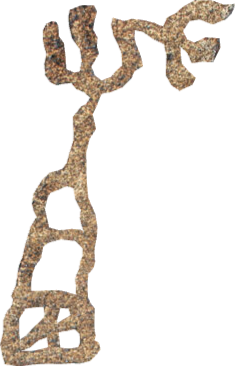 |
Gichi Nala 100:3 "Stūpa?" (MANP 4, 2001: p. 262, pl. 77) https://katalog.ub.uni-heidelberg.de/titel/68214838 |
architecture sacred architecture stūpa architectural elements stūpa elements base of stūpa multiple platforms rectangular bases platform ornamentation aṇḍa-dome semi-circular dome horseshoe/U-form chattra/chattrāvalī yaṣṭi connected features crowning element-varṣasthālī trident pennant |
Gichi Nala | GN100_2-3_IMG_9560 | ||
| GN033:2_Warrior |
 |
Gichi Nala 33:2 " Warrior" (MANP 4, 2001: p. 227, pl. 54) https://katalog.ub.uni-heidelberg.de/titel/68214838 |
anthropomorph human figure warrior human body position arm gesture one arm raised anthropomorphic features armor shield other anthropomorphic feature ball-like object |
Gichi Nala | GN033_2_IMG_4185 | ||
| GN003:16_Stūpa |
 |
GN003:16 Stūpa (MANP 4, p. 212, pl. 72) https://digi.hadw-bw.de/view/manp4/0230/image,info |
stūpa rectangular bases horseshoe/U-form pennant crowning element-varṣasthālī |
Gichi Nala | GN003_16_IMG_0516 | ||
| GN034_1_vessel |
 |
Gichi Nala 34:1 "Vessel" (MANP 4, 2001: p. 227-228, pl. 69) https://katalog.ub.uni-heidelberg.de/titel/68214838 |
artefact other object vessel overflowing vessel |
Gichi Nala | GN034_1_IMG_4202 | ||
| GN068:11_Animal? |
 |
Gichi Nala 68:11 "Animal?" (MANP 4, 2001: p. 249, pl. 66) https://katalog.ub.uni-heidelberg.de/titel/68214838 |
animal-zoomorph |
Gichi Nala | GN068_11-16_IMG_4745 | ||
| GN068:12_Caprinus |
 |
Gichi Nala 68:12 "Caprinus" (MANP 4, 2001: p. 249, pl. 62) https://katalog.ub.uni-heidelberg.de/titel/68214838 |
animal-zoomorph mammal caprinus |
Gichi Nala | GN068_11-16_IMG_4745 | ||
| GN068:13_Markhor |
 |
Gichi Nala 68:13 "Markhor" (MANP 4, 2001: p. 249, pl. 64) https://katalog.ub.uni-heidelberg.de/titel/68214838 |
animal-zoomorph mammal animal features animal body parts ears |
Gichi Nala | GN068_11-16_IMG_4745 | ||
| GN068:15_Caprinus? |
 |
Gichi Nala 68:15 "Caprinus?" (MANP 4, 2001: p. 249, pl. 62) https://katalog.ub.uni-heidelberg.de/titel/68214838 |
animal-zoomorph mammal caprinus |
Gichi Nala | GN068_11-16_IMG_4745 | ||
| GN068:16_Caprinus? |
 |
Possible caprinus petroglyph with very light patina (th body is outlined in contour), which is not documented in MANP 4. |
animal-zoomorph mammal caprinus |
Gichi Nala | GN068_11-16_IMG_4745 | ||
| GN068:14_Indeterminate |
 |
Gichi Nala 68:14 "Unclear" (MANP 4, 2001: p. 249) https://katalog.ub.uni-heidelberg.de/titel/68214838 |
indeterminate |
Gichi Nala | GN068_11-16_IMG_4745 | ||
| GN095:4_Human figure |
 |
Gichi Nala 95:4 "Human being" (MANP 4, 2001: p. 259, pl. 56) https://katalog.ub.uni-heidelberg.de/titel/68214838 |
anthropomorph human figure anthropomorphic features human body parts feet |
Gichi Nala | GN095_4_IMG_9997 | ||
| GN100:4_Building |
 |
Gichi Nala 100:4 "Building" (MANP 4, 2001: p. 262, pl. 68) https://katalog.ub.uni-heidelberg.de/titel/68214838 |
architecture architectural elements building |
Gichi Nala | GN100_4_IMG_9619 | ||
| GN108:5_Caprinus |
 |
Gichi Nala 108:5 "Caprinus" (MANP 4, 2001: p. 265, pl. 62) https://katalog.ub.uni-heidelberg.de/titel/68214838 |
animal-zoomorph mammal caprinus animal features animal body parts goatee |
Gichi Nala | GN108_4-6_IMG_8655 | ||
| GN095:5_Human figure |
 |
Gichi Nala 95:5 "Human being" (MANP 4, 2001: p. 259, pl. 56) https://katalog.ub.uni-heidelberg.de/titel/68214838 |
anthropomorph human figure anthropomorphic features human body parts feet |
Gichi Nala | GN095_5-6_IMG_0063 | ||
| GN095:6_Male figure |
 |
Gichi Nala 95:6 "Male figure" (MANP 4, 2001: p. 259, pl. 55) https://katalog.ub.uni-heidelberg.de/titel/68214838 |
anthropomorph human figure male figure anthropomorphic features human body parts phallos of human human body position hand gesture round hands feet |
Gichi Nala | GN095_5-6_IMG_0063 | ||
| GN059:4_Building? |
 |
Gichi Nala 59:4 "Building?" (MANP 4, 2001: p. 241, pl. 67) https://katalog.ub.uni-heidelberg.de/titel/68214838 |
architecture architectural elements building |
Gichi Nala | GN059_4-6_IMG_3702 | ||
| GN059:6_Stūpa |
 |
Gichi Nala 59:6 "Building?" (MANP 4, 2001: p. 241, pl. 67) https://katalog.ub.uni-heidelberg.de/titel/68214838 |
architecture sacred architecture stūpa architectural elements stūpa elements base of stūpa multiple platforms aṇḍa-dome semi-circular dome chattra/chattrāvalī yaṣṭi |
Gichi Nala | GN059_4-6_IMG_3702 | ||
| GN059:5_Stūpa |
 |
Gichi Nala 59:5 "Stūpa?" (MANP 4, 2001: p. 241, pl. 76) https://katalog.ub.uni-heidelberg.de/titel/68214838 |
architecture sacred architecture stūpa architectural elements stūpa elements base of stūpa multiple platforms aṇḍa-dome semi-circular dome |
Gichi Nala | GN059_4-6_IMG_3702 | ||
| GN003:19_Stūpa |
 |
Gichi Nala 3:19 "Stūpa" (MANP 4, 2001: p. 212-213, pl. 72) https://katalog.ub.uni-heidelberg.de/titel/68214838 |
stūpa stepped base semi-circular dome harmikā multiple umbrellas crescent moon pennant aṇḍa-dome crowning element-varṣasthālī chattra/chattrāvalī |
Gichi Nala | GN003_18-19_IMG_0855 | ||
| GN066:5_Rider |
 |
Gichi Nala 66:5 "Rider" (MANP 4, 2001: p. 245, pl. 57) https://katalog.ub.uni-heidelberg.de/titel/68214838 |
anthropomorph human figure rider anthropomorphic features clothing headdress armor human body position seated other anthropomorphic feature horse mount feature of the mount |
Gichi Nala | GN066_5-6_IMG_4437 | ||
| GN066:6_Human figure |
 |
Gichi Nala 66:6 "Human being" (MANP 4, 2001: p. 245-246, pl. 56) https://katalog.ub.uni-heidelberg.de/titel/68214838 |
anthropomorph human figure anthropomorphic features human body parts feet |
Gichi Nala | GN066_5-6_IMG_4437 | ||
| GN016:3_Stūpa? |
 |
Gichi Nala 16:3 "Stūpa?" (MANP 4, 2001: p. 219, pl. 73) https://katalog.ub.uni-heidelberg.de/titel/68214838 |
architecture sacred architecture stūpa architectural elements stūpa elements aṇḍa-dome base of stūpa multiple platforms rectangular bases chattra/chattrāvalī yaṣṭi |
Gichi Nala | GN016_3-4_IMG_0076 | ||
| GN016:4_Building |
 |
Gichi Nala 16:4 "Building" (MANP 4, 2001: p. 219, pl. 67) https://katalog.ub.uni-heidelberg.de/titel/68214838 |
architecture building |
Gichi Nala | GN016_3-4_IMG_0076 | ||
| GN089:1_Horse |
 |
Gichi Nala 89:1 "Horse?" (MANP 4, 2001: p. 255, pl. 65) https://katalog.ub.uni-heidelberg.de/titel/68214838 |
animal-zoomorph mammal horse animal features animal body position bent legs |
Gichi Nala | GN089_1_IMG_0632 | ||
| GN109:1_Indeterminate |
 |
Gichi Nala 109:1 "Unclear" (MANP 4, 2001: p. 265) https://katalog.ub.uni-heidelberg.de/titel/68214838 |
indeterminate |
Gichi Nala | GN109_1_IMG_8796 | ||
| GN031:4_Stūpa |
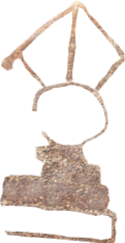 |
Gichi Nala 31:4" Stūpa?" (MANP 4, 2001: p. 226, pl. 74) https://katalog.ub.uni-heidelberg.de/titel/68214838 |
architecture sacred architecture stūpa architectural elements stūpa elements base of stūpa multiple platforms stepped base aṇḍa-dome semi-circular dome globular dome features point(s) in the dome harmikā connected features bell-ghaṇṭā crowning element-varṣasthālī trident |
Gichi Nala | GN031_4-6_IMG_5262 | ||
| GN031:5_Stūpa |
 |
Gichi Nala 31:5 "Stūpa?" (MANP 4, 2001: p. 226, pl. 74) https://katalog.ub.uni-heidelberg.de/titel/68214838 |
architecture sacred architecture stūpa architectural elements stūpa elements base of stūpa multiple platforms stepped base aṇḍa-dome semi-circular dome globular dome features point(s) in the dome harmikā chattra/chattrāvalī multiple umbrellas yaṣṭi anthropomorphic design |
Gichi Nala | GN031_4-6_IMG_5262 | ||
| GN031:6_Stūpa |
 |
Gichi Nala 31:6 "Stūpa?" (MANP 4, 2001: p. 226, pl. 74) https://katalog.ub.uni-heidelberg.de/titel/68214838 |
architecture sacred architecture stūpa architectural elements stūpa elements base of stūpa multiple platforms stepped base aṇḍa-dome semi-circular dome globular harmikā chattra/chattrāvalī multiple umbrellas yaṣṭi dome features anthropomorphic design |
Gichi Nala | GN031_4-6_IMG_5262 | ||
| GN031:4-6_Stūpas |
 |
Gichi Nala 31:A "Group of buildings" (MANP 4, 2001: p. 225, pl. 82) https://katalog.ub.uni-heidelberg.de/titel/68214838 |
architecture sacred architecture stūpa |
Gichi Nala | GN031_4-6_IMG_5262 | ||
| GN038:1_Fire(?)-altar |
 |
Gichi Nala 38:1 "Fire(?)-altar" (MANP 4, 2001: p. 229, pl. 69) https://katalog.ub.uni-heidelberg.de/titel/68214838 |
architecture sacred architecture fire(?)-altar |
Gichi Nala | GN038_1-3_IMG_3904 | ||
| GN038:3_Fire(?)-altar |
 |
Gichi Nala 38:3 "Fire(?)-altar" (MANP 4, 2001: p. 229, pl. 69) https://katalog.ub.uni-heidelberg.de/titel/68214838 |
architecture sacred architecture fire(?)-altar |
Gichi Nala | GN038_1-3_IMG_3904 | ||
| GN038:2_Indeterminate |
 |
Gichi Nala 38:2 "Unclear" (MANP 4, 2001: p. 229, pl. 78) https://katalog.ub.uni-heidelberg.de/titel/68214838 |
indeterminate |
Gichi Nala | GN038_1-3_IMG_3904 | ||
| GN043:1_Horse? |
 |
Gichi Nala 43:1 "Horse?" (MANP 4, 2001: p. 232, pl. 65) https://katalog.ub.uni-heidelberg.de/titel/68214838 |
animal-zoomorph mammal horse animal features animal body parts eye hooves animal body position bent legs tiptoes |
Gichi Nala | GN043_1-2_IMG_2259 | ||
| GN043:2_Stūpa |
 |
Gichi Nala 43:2 "Stūpa" (MANP 4, 2001: p. 232, pl. 75) https://katalog.ub.uni-heidelberg.de/titel/68214838 |
architecture sacred architecture stūpa architectural elements stūpa elements base of stūpa multiple platforms stepped base aṇḍa-dome semi-circular dome hemispheric harmikā chattra/chattrāvalī multiple umbrellas yaṣṭi |
Gichi Nala | GN043_1-2_IMG_2259 | ||
| GN098:1_Building |
 |
Gichi Nala 98:1 "Building" (MANP 4, 2001: p. 261, pl. 68) https://katalog.ub.uni-heidelberg.de/titel/68214838 |
architecture architectural elements building |
Gichi Nala | GN098_1_IMG_9887 | ||
| GN066:7_Tamga? |
 |
Gichi Nala 66:7 "Tamga?" (MANP 4, 2001: p. 246, pl. 78) https://katalog.ub.uni-heidelberg.de/titel/68214838 |
ornament tamga |
Gichi Nala | GN066_7_IMG_4510 | ||
| GN035:2 indeterminate |
 |
Gichi Nala 35:2 (MANP 4, 2001, p. 228, pl. 107) is indeterminate because it is unclear if an unfinished inscription was attempted or if three disc-like motifs were drawn as small outlined ovoid shapes |
indeterminate |
Gichi Nala | GN035_2_IMG_0165 | ||
| GN020:2_Stūpa |
 |
Gichi Nala 20:2 "Stūpa" (MANP 4, 2001: p. 221, pl. 73) https://katalog.ub.uni-heidelberg.de/titel/68214838 |
architecture sacred architecture stūpa architectural elements stūpa elements aṇḍa-dome base of stūpa multiple platforms stepped base chattra/chattrāvalī yaṣṭi semi-circular dome globular dome features false niche |
Gichi Nala | GN020_2-5_IMG_1770 | ||
| GN020:3_Horse |
 |
Gichi Nala 20:3 "Horse" (MANP 4, 2001: p. 221, pl. 64) https://katalog.ub.uni-heidelberg.de/titel/68214838 |
animal-zoomorph mammal horse animal features animal body parts eye hooves animal body position bent legs tiptoes |
Gichi Nala | GN020_2-5_IMG_1770 | ||
| GN020:4_Animal |
 |
Gichi Nala 20:4 "Animal" (MANP 4, 2001: p. 221, pl. 66) https://katalog.ub.uni-heidelberg.de/titel/68214838 |
animal-zoomorph |
Gichi Nala | GN020_2-5_IMG_1770 | ||
| GN020:5_Stūpa |
 |
Gichi Nala 20:5 "Stūpa" (MANP 4, 2001: p. 221, pl. 73) https://katalog.ub.uni-heidelberg.de/titel/68214838 |
architecture sacred architecture stūpa architectural elements stūpa elements aṇḍa-dome semi-circular dome hemispheric base of stūpa multiple platforms rectangular bases harmikā connected features pennant chattra/chattrāvalī yaṣṭi |
Gichi Nala | GN020_2-5_IMG_1770 | ||
| GN019:1_Ibex |
 |
Gichi Nala 19:1 "Ibex" (MANP 4, 2001: p. 220, pl. 65) https://katalog.ub.uni-heidelberg.de/titel/68214838 |
animal-zoomorph mammal ibex animal features animal body parts ears hooves eye animal body position bent legs tiptoes opened mouth-jaw |
Gichi Nala | GN019_1_IMG_2130 | ||
| GN007:1_Stūpa |
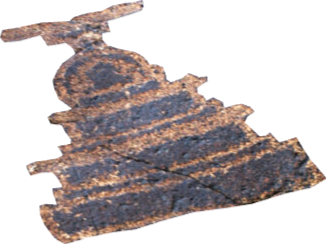 |
Gichi Nala 7:1 "Stūpa" (MANP 4, 2001: p. 216, pl. 72) https://katalog.ub.uni-heidelberg.de/titel/68214838 |
architecture sacred architecture stūpa architectural elements stūpa elements aṇḍa-dome dome features false niche semi-circular dome hemispheric base of stūpa multiple platforms with mouldings harmikā |
Gichi Nala | GN007_1_IMG_1324 | ||
| GN008:1_Rider |
 |
Gichi Nala 8:1 "Rider" (MANP 4, 2001: p. 216, pl. 57) https://katalog.ub.uni-heidelberg.de/titel/68214838 |
human figure rider anthropomorphic features other anthropomorphic feature horse mount harness human body position arm gesture one arm raised anthropomorph |
Gichi Nala | GN008_1-3_IMG_1548 | ||
| GN008:2_Human figure |
 |
Gichi Nala 8:2 "Human being" (MANP 4, 2001: p. 216, pl. 55) https://katalog.ub.uni-heidelberg.de/titel/68214838 |
anthropomorph human figure anthropomorphic features human body position arm gesture arms outstretched |
Gichi Nala | GN008_1-3_IMG_1548 | ||
| GN008:3_Animal |
 |
Gichi Nala 8:2 "Animal" (MANP 4, 2001: p. 216, pl. 66) https://katalog.ub.uni-heidelberg.de/titel/68214838 |
animal-zoomorph |
Gichi Nala | GN008_1-3_IMG_1548 | ||
| GN031:1_Stūpa |
 |
Gichi Nala 31:1 "Stūpa?" (MANP 4, 2001: p. 225, pl. 74 and Xb) https://katalog.ub.uni-heidelberg.de/titel/68214838 |
architecture sacred architecture stūpa architectural elements stūpa elements base of stūpa multiple platforms stepped base platform ornamentation aṇḍa-dome semi-circular dome globular chattra/chattrāvalī yaṣṭi multiple umbrellas connected features bell-ghaṇṭā crowning element-varṣasthālī trident harmikā dome features anthropomorphic design |
Gichi Nala | GN031_1-2_IMG_5269 | ||
| GN059:7_Stūpa |
 |
Gichi Nala 59:7 "Stūpa" (MANP 4, 2001: p. 241, pl. 76) https://katalog.ub.uni-heidelberg.de/titel/68214838 |
architecture sacred architecture stūpa architectural elements stūpa elements base of stūpa multiple platforms stepped base aṇḍa-dome semi-circular dome horseshoe/U-form chattra/chattrāvalī multiple umbrellas dome features drum |
Gichi Nala | GN059_7-8_IMG_3700 | ||
| GN059:8_Stūpa |
 |
Gichi Nala 59:8 "Stūpa?" (MANP 4, 2001: p. 241, pl. 76) https://katalog.ub.uni-heidelberg.de/titel/68214838 |
architecture sacred architecture stūpa |
Gichi Nala | GN059_7-8_IMG_3700 | ||
| GN090:1_Quadrilateral |
 |
Gichi Nala 90:1 "Quadrilateral" (MANP 4, 2001: p. 255, pl. 80) https://katalog.ub.uni-heidelberg.de/titel/68214838 |
ornament geometric motif quadrilateral |
Gichi Nala | GN090_1_IMG_0574 | ||
| GN001:5_Human figure |
 |
Gichi Nala 1:6 "Warrior?" (MANP 4, 2001: p. 209, pl. 54) https://katalog.ub.uni-heidelberg.de/titel/68214838 |
human figure arms raised |
Gichi Nala | GN001_5-6_IMG_1019 | ||
| GN001:6_Human figure |
 |
Gichi Nala 1:6 "Warrior?" (MANP 4, 2001: p. 209, pl. 54) https://katalog.ub.uni-heidelberg.de/titel/68214838 |
human figure arms raised fingered hands other anthropomorphic feature |
Gichi Nala | GN001_5-6_IMG_1019 | ||
| GN003:2_Stūpa |
 |
Gichi Nala 3:2 "Stūpa" (MANP 4, 2001: p. 210, pl. 71 and VIIIa) https://katalog.ub.uni-heidelberg.de/titel/68214838 |
stūpa stepped base platform ornamentation points hemispheric false niche pennant multiple umbrellas aṇḍa-dome chattra/chattrāvalī crowning element-varṣasthālī harmikā crescent moon |
Gichi Nala | GN003_2-3_IMG_0703 | ||
| GN003:4_Stūpa |
 |
Gichi Nala 3:4 "Stūpa" (MANP 4, 2001: p. 210, pl. 71) https://katalog.ub.uni-heidelberg.de/titel/68214838 |
stūpa stepped base platform ornamentation horseshoe/U-form yaṣṭi aṇḍa-dome harmikā zigzags base of stūpa |
Gichi Nala | GN003_4-5_IMG_0712 | ||
| GN010:1_Animal |
 |
Gichi Nala 10:1 "Animal" (MANP 4, 2001: p. 217, pl. 66) https://katalog.ub.uni-heidelberg.de/titel/68214838 |
animal-zoomorph |
Gichi Nala | GN010_1-7_IMG_1686 | ||
| GN010:7_Animal |
 |
Gichi Nala 10:7 "Animal" (MANP 4, 2001: p. 218, pl. 66) https://katalog.ub.uni-heidelberg.de/titel/68214838 |
animal-zoomorph |
Gichi Nala | GN010_1-7_IMG_1686 | ||
| GN010:6_Camel? |
 |
Gichi Nala 10:6 "Camel?" (MANP 4, 2001: p. 217-218, pl. 64) https://katalog.ub.uni-heidelberg.de/titel/68214838 |
animal-zoomorph mammal camel |
Gichi Nala | GN010_1-7_IMG_1686 | ||
| GN010:4_Human figure |
 |
Gichi Nala 10:4 "human figure" (MANP 4, 2001: p. 217, pl. 55) https://katalog.ub.uni-heidelberg.de/titel/68214838 |
anthropomorph human figure anthropomorphic features human body position arm gesture arms raised |
Gichi Nala | GN010_1-7_IMG_1686 | ||
| GN010:5_Rider |
 |
Gichi Nala 10:5 "rider" (MANP 4, 2001: p. 217, pl. 57) https://katalog.ub.uni-heidelberg.de/titel/68214838 |
anthropomorph human figure rider anthropomorphic features other anthropomorphic feature harness horse mount |
Gichi Nala | GN010_1-7_IMG_1686 | ||
| GN010:2_Human figure |
 |
anthropomorph human figure anthropomorphic features human body position arm gesture arms raised |
Gichi Nala | GN010_1-7_IMG_1686 | |||
| GN010:3_Human figure |
 |
Gichi Nala 10:3 "Human figure" (MANP 4, 2001: p. 217, pl. 55) https://katalog.ub.uni-heidelberg.de/titel/68214838 |
anthropomorph human figure anthropomorphic features human body position arm gesture arms raised |
Gichi Nala | GN010_1-7_IMG_1686 | ||
| GN070:1_Phallos |
 |
Gichi Nala 70:1 "Phallos" (MANP 4, 2001: p. 249, pl. 60) https://katalog.ub.uni-heidelberg.de/titel/68214838 |
anthropomorph body part phallos |
Gichi Nala | GN070_1-2_IMG_5023 | ||
| GN020:1_Ungulate |
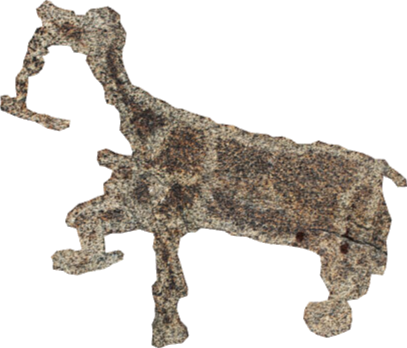 |
Gichi Nala 20:1 "Ungulate" (MANP 4, 2001: p. 220-221, pl. 64) https://katalog.ub.uni-heidelberg.de/titel/68214838 |
animal-zoomorph mammal ungulate animal features eye hooves animal body position bent legs other animal features compartmentalized |
Gichi Nala | GN020_1_IMG_1758 | ||
| GN003:8_Stūpa |
 |
Gichi Nala 3:8 "Stūpa" (MANP 4, 2001: p. 211, pl. 71 and IXa) https://katalog.ub.uni-heidelberg.de/titel/68214838 |
stūpa stepped base with mouldings platform ornamentation hemispheric point(s) in the dome multiple umbrellas yaṣṭi aṇḍa-dome chattra/chattrāvalī harmikā bell-ghaṇṭā sun crowning element-varṣasthālī pennant |
Gichi Nala | GN003_8_IMG_0665 | ||
| GN071:3_Indeterminate |
 |
Gichi Nala 71:3 "Unclear" (MANP 4, 2001: p. 250, pl. 78) https://katalog.ub.uni-heidelberg.de/titel/68214838 |
indeterminate |
Gichi Nala | GN071_3_IMG_4978 | ||
| GN035:5_Flower |
 |
Gichi Nala 35:5 "Flower?" (MANP 4, 2001: p. 228, pl. 68 and XIa) https://katalog.ub.uni-heidelberg.de/titel/68214838 |
ornament vegetal motif flower |
Gichi Nala | GN035_5_IMG_0127 | ||
| GN003:12_Stūpa? |
 |
Gichi Nala 3:12 "Stūpa?" (MANP 4, 2001: p. 212, pl. 71) https://katalog.ub.uni-heidelberg.de/titel/68214838 |
stūpa stepped base semi-circular dome multiple umbrellas sun pennant aṇḍa-dome chattra/chattrāvalī crowning element-varṣasthālī |
Gichi Nala | GN003_12-16_IMG_0515 | ||
| GN003:13_Stūpa |
 |
Gichi Nala 3:13 "Stūpa" (MANP 4, 2001: p. 212, pl. 71) https://katalog.ub.uni-heidelberg.de/titel/68214838 |
stūpa stepped base semi-circular dome multiple umbrellas crescent moon pennant aṇḍa-dome chattra/chattrāvalī crowning element-varṣasthālī |
Gichi Nala | GN003_12-16_IMG_0515 | ||
| GN003:15_Stūpa |
 |
Gichi Nala 3:15 "Stūpa" (MANP 4, 2001: p. 212, pl. 71) https://katalog.ub.uni-heidelberg.de/titel/68214838 |
stūpa stepped base semi-circular dome harmikā multiple umbrellas pennant crescent moon aṇḍa-dome chattra/chattrāvalī crowning element-varṣasthālī trident |
Gichi Nala | GN003_12-16_IMG_0515 | ||
| GN012:1_Stūpa |
 |
Gichi Nala 12:1 "Stūpa" (MANP 4, 2001: p. 218, pl. 73 and IXb) https://katalog.ub.uni-heidelberg.de/titel/68214838 |
architecture sacred architecture stūpa architectural elements stūpa elements aṇḍa-dome semi-circular dome hemispheric horseshoe/U-form base of stūpa multiple platforms platform ornamentation points zigzags harmikā chattra/chattrāvalī multiple umbrellas connected features pennant bell-ghaṇṭā crowning element-varṣasthālī trident |
Gichi Nala | GN012_1_IMG_0735 | ||
| GN038:7_indeterminate |
 |
Gichi Nala 38:7 "Human being" (MANP 4, 2001: p. 230, pl. 55) https://katalog.ub.uni-heidelberg.de/titel/68214838 |
indeterminate |
Gichi Nala | GN038_7_IMG_3934 | ||
| GN048:1_Caprinus |
 |
Gichi Nala 48:1 "Caprinus" (MANP 4, 2001: p. 234, pl. 61) https://katalog.ub.uni-heidelberg.de/titel/68214838 |
animal-zoomorph mammal caprinus |
Gichi Nala | GN048_1-6_IMG_2328 | ||
| GN048:5_Ibex |
 |
Gichi Nala 48:5 "Caprinus" (MANP 4, 2001: p. 234, pl. 61) https://katalog.ub.uni-heidelberg.de/titel/68214838 |
animal-zoomorph mammal ibex animal features animal body parts ears animal body position tail position raised tail opened mouth-jaw |
Gichi Nala | GN048_1-6_IMG_2328 | ||
| GN048:3_Ornamented disc |
 |
Gichi Nala 48:3 "Disc" (MANP 4, 2001: p. 234, pl. 70) https://katalog.ub.uni-heidelberg.de/titel/68214838 |
ornament disc |
Gichi Nala | GN048_1-6_IMG_2328 | ||
| GN048:4_Ornamented disc |
 |
Gichi Nala 48:4 "Disc" (MANP 4, 2001: p. 234, pl. 70) https://katalog.ub.uni-heidelberg.de/titel/68214838 |
ornament geometric motif disc |
Gichi Nala | GN048_1-6_IMG_2328 | ||
| GN048:2_Rider |
 |
Gichi Nala 48:2 "Rider" (MANP 4, 2001: p. 234, pl. 57) https://katalog.ub.uni-heidelberg.de/titel/68214838 |
anthropomorph human figure rider anthropomorphic features other anthropomorphic feature horse mount armor artefact weapon axe feature of the mount |
Gichi Nala | GN048_1-6_IMG_2328 | ||
| GN048:6_Rider |
 |
Gichi Nala 48:6 "Rider" (MANP 4, 2001: p. 234, pl. 57) https://katalog.ub.uni-heidelberg.de/titel/68214838 |
anthropomorph human figure rider anthropomorphic features other anthropomorphic feature horse mount armor armed wth bow |
Gichi Nala | GN048_1-6_IMG_2328 | ||
| GN048:20_Caprinus |
 |
The outline of this figure is very approximative as it is barely visible because of the erosion. It is not present in MANP 4. |
animal-zoomorph mammal caprinus |
Gichi Nala | GN048_1-6_IMG_2328 | ||
| GN048:21_Animal? |
 |
Very eroded image, not documented in the MANP 4. It seems to be an animal figure. The outline is very approximative as it is barely visible. |
animal-zoomorph |
Gichi Nala | GN048_1-6_IMG_2328 | ||
| GN023:3_Stūpa |
 |
Gichi Nala 23:4 " Stūpa" (MANP 4, 2001: p. 222-223, pl. 74 and Xa) https://katalog.ub.uni-heidelberg.de/titel/68214838 |
architecture sacred architecture stūpa architectural elements stūpa elements base of stūpa multiple platforms stepped base with mouldings platform ornamentation points zigzags aṇḍa-dome dome features drum false niche semi-circular dome hemispheric harmikā connected features bell-ghaṇṭā crowning element-varṣasthālī trident pennant chattra/chattrāvalī yaṣṭi multiple umbrellas |
Gichi Nala | GN023_1_4_IMG_1487 | ||
| GN023:1_Building |
 |
Gichi Nala 23:1 " Building" (MANP 4, 2001: p. 222, pl. 67) https://katalog.ub.uni-heidelberg.de/titel/68214838 |
architecture building |
Gichi Nala | GN023_1_4_IMG_1487 | ||
| GN006:1_Animal |
 |
Gichi Nala 6:1 "Animal" (MANP 4, 2001: p. 214, pl. 66) https://katalog.ub.uni-heidelberg.de/titel/68214838 |
animal-zoomorph animal body parts ears |
Gichi Nala | GN006_1-3_IMG_1861 | ||
| GN006:3_Caprinus? |
 |
Gichi Nala 6:3 "Caprinus" (MANP 4, 2001: p. 214, pl. 61) https://katalog.ub.uni-heidelberg.de/titel/68214838 |
animal-zoomorph mammal caprinus |
Gichi Nala | GN006_1-3_IMG_1861 | ||
| GN006:2_Caprinus? |
 |
Gichi Nala 6:2 "Caprinus ?" (MANP 4, 2001: p. 214, pl. 61) https://katalog.ub.uni-heidelberg.de/titel/68214838 |
animal-zoomorph mammal caprinus |
Gichi Nala | GN006_1-3_IMG_1861 | ||
| GN035:3_indeterminate |
 |
Gichi Nala 35:3 "Unclear" (MANP 4, 2001: p. 228, pl. 78) https://katalog.ub.uni-heidelberg.de/titel/68214838 |
indeterminate |
Gichi Nala | GN035_3_IMG_0134 | ||
| GN035:6_Stūpa |
 |
Gichi Nala 35:6 "Stūpa" (MANP 4, 2001: p. 228, pl. 75) https://katalog.ub.uni-heidelberg.de/titel/68214838 |
architecture sacred architecture stūpa architectural elements stūpa elements base of stūpa multiple platforms stepped base chattra/chattrāvalī yaṣṭi connected features bell-ghaṇṭā crowning element-varṣasthālī pennant |
Gichi Nala | GN035_6_IMG_0160 | ||
| GN003:9_Stūpa? |
 |
Gichi Nala 3:9 "Building" (MANP 4, 2001: p. 211, pl. 67) https://katalog.ub.uni-heidelberg.de/titel/68214838 |
stūpa stepped base points multiple umbrellas yaṣṭi sun pennant building multiple platforms platform ornamentation chattra/chattrāvalī crowning element-varṣasthālī |
Gichi Nala | GN003_9_IMG_0561 | ||
| GN016:2_Building |
 |
Gichi Nala 16:2 "Building" (MANP 4, 2001: p. 219, pl. 67) https://katalog.ub.uni-heidelberg.de/titel/68214838 |
architecture building |
Gichi Nala | GN016_2_IMG_2064 | ||
| GN049:1_Horse |
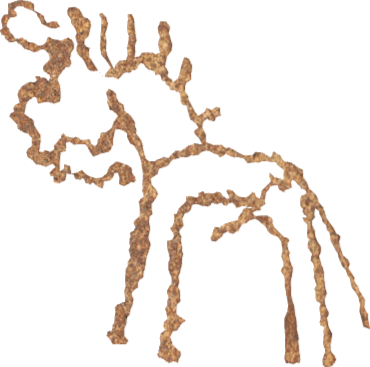 |
Gichi Nala 49:1 "Horse?" (MANP 4, 2001: p. 236, pl. 65) https://katalog.ub.uni-heidelberg.de/titel/68214838 |
animal-zoomorph mammal horse animal features animal body parts hooves mane phallus of animal |
Gichi Nala | GN049_1_IMG_2454 | ||
| GN072:2_Caprinus |
 |
Gichi Nala 72:2 "Caprinus" (MANP 4, 2001: p. 250, pl. 62) https://katalog.ub.uni-heidelberg.de/titel/68214838 |
animal-zoomorph mammal caprinus animal features animal body position tail position raised tail |
Gichi Nala | GN072_1-2_IMG_5103 | ||
| GN072:1_Caprinus |
 |
Gichi Nala 72:1 "Caprinus" (MANP 4, 2001: p. 250, pl. 62) https://katalog.ub.uni-heidelberg.de/titel/68214838 |
animal-zoomorph mammal caprinus |
Gichi Nala | GN072_1-2_IMG_5103 | ||
| GN103:1_Foot |
 |
Gichi Nala 103:1 "Foot" (MANP 4, 2001: p. 263, pl. 59) https://katalog.ub.uni-heidelberg.de/titel/68214838 |
anthropomorph anthropomorphic features body part foot |
Gichi Nala | GN103_1_IMG_9508 | ||
| GN004:1_Stūpa? |
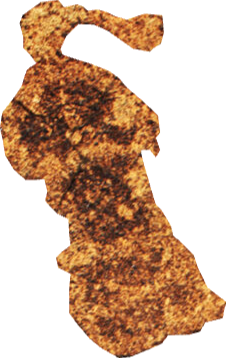 |
Gichi Nala 4:1 "Stūpa?" (MANP 4, 2001: p. 213, pl. 72) https://katalog.ub.uni-heidelberg.de/titel/68214838 |
architecture sacred architecture stūpa pennant stūpa elements dome features point(s) in the dome architectural elements connected features base of stūpa multiple platforms rectangular bases aṇḍa-dome semi-circular dome horseshoe/U-form |
Gichi Nala | GN004_1_IMG_1247 | ||
| GN038:4_Stūpa? |
 |
Gichi Nala 38:4 "Stūpa?" (MANP 4, 2001: p. 229, pl. 75) https://katalog.ub.uni-heidelberg.de/titel/68214838 |
architecture sacred architecture stūpa architectural elements stūpa elements base of stūpa multiple platforms rectangular bases |
Gichi Nala | GN038_4-6_IMG_3817 | ||
| GN038:6_Stūpa |
 |
Gichi Nala 38:6 "Stūpa" (MANP 4, 2001: p. 229, pl. 75) https://katalog.ub.uni-heidelberg.de/titel/68214838 |
architecture sacred architecture stūpa architectural elements stūpa elements base of stūpa multiple platforms stepped base aṇḍa-dome semi-circular dome globular chattra/chattrāvalī yaṣṭi connected features crowning element-varṣasthālī pennant |
Gichi Nala | GN038_4-6_IMG_3817 | ||
| GN038:4_Stūpa |
 |
Gichi Nala 38:4 "Stūpa?" (MANP 4, 2001: p. 229, pl. 75) https://katalog.ub.uni-heidelberg.de/titel/68214838 |
architecture sacred architecture stūpa architectural elements stūpa elements base of stūpa multiple platforms rectangular bases platform ornamentation points aṇḍa-dome semi-circular dome hemispheric dome features garland chattra/chattrāvalī yaṣṭi connected features pennant |
Gichi Nala | GN038_4-6_IMG_3817 | ||
| GN067:10_Tamga? |
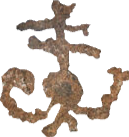 |
Gichi Nala 67:10 "Tamga?" (MANP 4, 2001: p. 247, pl. 78) https://katalog.ub.uni-heidelberg.de/titel/68214838 |
ornament tamga |
Gichi Nala | GN067_3-4_10-13_IMG_4610 | ||
| GN073:1_Human figure |
 |
Gichi Nala 73:1 "Warrior?" (MANP 4, 2001: p. 250, pl. 54) https://katalog.ub.uni-heidelberg.de/titel/68214838 |
anthropomorph human figure anthropomorphic features human body position arm gesture one arm raised armor armed wth bow |
Gichi Nala | GN073_1_IMG_5053 | ||
| GN037:2_Flower |
 |
Gichi Nala 37:2 "Flower" (MANP 4, 2001: p. 229, pl. 68) https://katalog.ub.uni-heidelberg.de/titel/68214838 |
ornament vegetal motif flower |
Gichi Nala | GN037_1-2_IMG_4120 | ||
| GN055_1_Stūpa |
 |
Gichi Nala 55:1 "Stūpa?" (MANP 4, 2001: p. 239, pl. 75) https://katalog.ub.uni-heidelberg.de/titel/68214838 |
architecture sacred architecture stūpa architectural elements stūpa elements base of stūpa multiple platforms stepped base aṇḍa-dome semi-circular dome |
Gichi Nala | GN055_1_IMG_3109 | ||
| GN059:19_Male figure |
 |
Gichi Nala 59:19 "Male figure" (MANP 4, 2001: p. 243, pl. 55) https://katalog.ub.uni-heidelberg.de/titel/68214838 |
anthropomorph human figure male figure anthropomorphic features human body position arm gesture arms raised hand gesture round hands human body parts feet phallos of human |
Gichi Nala | GN059_19-22_IMG_3623 | ||
| GN059:20_Human figure |
 |
Gichi Nala 59:19 "Male figure" (MANP 4, 2001: p. 243, pl. 55) https://katalog.ub.uni-heidelberg.de/titel/68214838 |
anthropomorph human figure anthropomorphic features human body position hand gesture hands on the hips human body parts feet |
Gichi Nala | GN059_19-22_IMG_3623 | ||
| GN059:21_Male figure |
 |
Gichi Nala 59:21 "Male figure" (MANP 4, 2001: p. 243, pl. 55) https://katalog.ub.uni-heidelberg.de/titel/68214838 |
anthropomorph human figure male figure anthropomorphic features human body position arm gesture arms raised hand gesture round hands human body parts feet phallos of human |
Gichi Nala | GN059_19-22_IMG_3623 | ||
| GN059:22_Human figure |
 |
Gichi Nala 59:22 "Human being" (MANP 4, 2001: p. 243, pl. 56) https://katalog.ub.uni-heidelberg.de/titel/68214838 |
anthropomorph human figure anthropomorphic features human body position arm gesture one arm raised human body parts feet |
Gichi Nala | GN059_19-22_IMG_3623 | ||
| GN107:1_Human figure |
 |
Gichi Nala 107:1 "Human being" (MANP 4, 2001: p. 265, pl. 56) https://katalog.ub.uni-heidelberg.de/titel/68214838 |
anthropomorph human figure anthropomorphic features human body position arm gesture arms outstretched |
Gichi Nala | GN107_1_IMG_8836 | ||
| GN055:4_Stūpa |
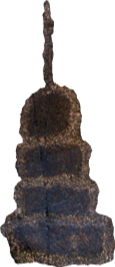 |
Gichi Nala 55:4 "Stūpa" (MANP 4, 2001: p. 239, pl. 76) https://katalog.ub.uni-heidelberg.de/titel/68214838 |
architecture sacred architecture stūpa architectural elements stūpa elements base of stūpa multiple platforms stepped base aṇḍa-dome semi-circular dome horseshoe/U-form chattra/chattrāvalī yaṣṭi |
Gichi Nala | GN055_2_4_IMG_2977 | ||
| GN060:1_Human figure |
 |
Gichi Nala 60:1 "Human being" (MANP 4, 2001: p. 243, pl. 56) https://katalog.ub.uni-heidelberg.de/titel/68214838 |
anthropomorph human figure anthropomorphic features human body position arm gesture arms raised hand gesture fingered hands human body parts feet clothing headdress other anthropomorphic feature |
Gichi Nala | GN060_1_IMG_3546 | ||
| GN110:1_Indeterminate |
 |
Gichi Nala 110:1 "Unclear" (MANP 4, 2001: p. 266) https://katalog.ub.uni-heidelberg.de/titel/68214838 |
indeterminate |
Gichi Nala | GN110_1_IMG_8783 | ||
| GN074:1_Hand |
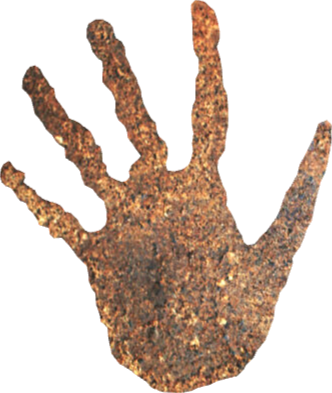 |
Gichi Nala 74:1 "Hand" (MANP 4, 2001: p. 250, pl. 60) https://katalog.ub.uni-heidelberg.de/titel/68214838 |
anthropomorph body part hand |
Gichi Nala | GN074_1_IMG_5149 | ||
| GN092:5_Horse? |
 |
Gichi Nala 92:5 "Horse?" (MANP 4, 2001: p. 256, pl. 65) https://katalog.ub.uni-heidelberg.de/titel/68214838 |
animal-zoomorph mammal horse animal features animal body parts ball-like tail animal body position opened mouth-jaw |
Gichi Nala | GN092_2-7_IMG_0309 | ||
| GN092:6_Horse |
 |
Gichi Nala 92:6 "Horse?" (MANP 4, 2001: p. 256, pl. 65) https://katalog.ub.uni-heidelberg.de/titel/68214838 |
animal-zoomorph mammal horse animal features animal body parts hooves animal body position opened mouth-jaw ears |
Gichi Nala | GN092_2-7_IMG_0309 | ||
| GN092:7_Bird |
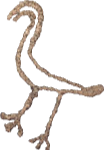 |
Gichi Nala 92:7 "Bird" (MANP 4, 2001: p. 256-257, pl. 66) https://katalog.ub.uni-heidelberg.de/titel/68214838 |
animal-zoomorph bird animal features animal body position opened mouth-jaw |
Gichi Nala | GN092_2-7_IMG_0309 | ||
| GN092:3_Quadrilateral |
 |
Gichi Nala 92:3 "Quadtrilateral" (MANP 4, 2001: p. 256, pl. 80) https://katalog.ub.uni-heidelberg.de/titel/68214838 |
ornament geometric motif quadrilateral |
Gichi Nala | GN092_2-7_IMG_0309 | ||
| GN061:3_Caprinus |
 |
Gichi Nala 61:3 "Caprinus" (MANP 4, 2001: p. 244, pl. 62) https://katalog.ub.uni-heidelberg.de/titel/68214838 |
animal-zoomorph mammal caprinus animal features animal body position tail position raised tail |
Gichi Nala | GN061_3-4_IMG_1987 | ||
| GN061:4_Caprinus |
 |
Gichi Nala 61:4 "Caprinus" (MANP 4, 2001: p. 244) https://katalog.ub.uni-heidelberg.de/titel/68214838 |
animal-zoomorph mammal caprinus animal features animal body position tail position raised tail |
Gichi Nala | GN061_3-4_IMG_1987 | ||
| GN106:1_Trident |
 |
Gichi Nala 106:1 "Trident" (MANP 4, 2001: p. 264, pl. 69) https://katalog.ub.uni-heidelberg.de/titel/68214838 |
artefact ceremonial object trident |
Gichi Nala | GN106_1_IMG_9035 | ||
| GN067:15_Male figure? |
 |
Gichi Nala 67:15 "Male figure?" (MANP 4, 2001: p. 247, pl. 55) https://katalog.ub.uni-heidelberg.de/titel/68214838 |
anthropomorph human figure male figure anthropomorphic features clothing headdress fungiform headdress human body parts phallos of human |
Gichi Nala | GN067_15_IMG_4696 | ||
| GN001:2_Human figure |
 |
Gichi Nala 1:2 "Human being" (MANP 4, 2001: p. 209, pl. 55) https://katalog.ub.uni-heidelberg.de/titel/68214838 |
human figure arms outstretched |
Gichi Nala | GN001_2_IMG_0946 | ||
| GN075:5_Circle |
 |
Gichi Nala 75:5 "Unclear" (MANP 4, 2001: p. 251, pl. 78) https://katalog.ub.uni-heidelberg.de/titel/68214838 |
ornament geometric motif circle |
Gichi Nala | GN075_5-6_IMG_5172 | ||
| GN075:6_Indeterminate |
 |
Gichi Nala 75:6 "Unclear" (MANP 4, 2001: p. 251, pl. 78) https://katalog.ub.uni-heidelberg.de/titel/68214838 |
indeterminate |
Gichi Nala | GN075_5-6_IMG_5172 | ||
| GN095:2_Human figure |
 |
Gichi Nala 95:2 "Human being" (MANP 4, 2001: p. 258-259, pl. 56) https://katalog.ub.uni-heidelberg.de/titel/68214838 |
anthropomorph human figure |
Gichi Nala | GN095_1-2_IMG_9990 | ||
| GN005:5_Caprinus |
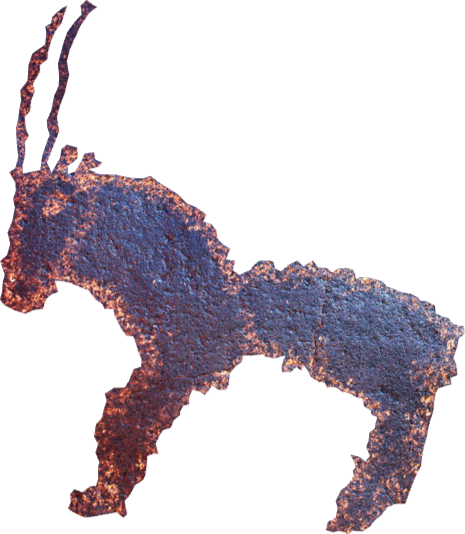 |
Gichi Nala 5:5 "Caprinus" (MANP 4, 2001: p. 213, pl. 61) https://katalog.ub.uni-heidelberg.de/titel/68214838 |
animal-zoomorph mammal caprinus animal features animal body parts eye ears animal body position bent legs |
Gichi Nala | GN005_5_IMG_1779 | ||
| GN056:4_Stūpa |
 |
Gichi Nala 56:4 "Stūpa?" (MANP 4, 2001: p. 240, pl. 76) https://katalog.ub.uni-heidelberg.de/titel/68214838 |
architecture sacred architecture stūpa architectural elements stūpa elements base of stūpa multiple platforms rectangular bases chattra/chattrāvalī yaṣṭi |
Gichi Nala | GN056_4-5_IMG_3273 | ||
| GN063:1_Caprinus? |
 |
Gichi Nala 63:1 "Caprinus" (MANP 4, 2001: p. 244, pl. 62) https://katalog.ub.uni-heidelberg.de/titel/68214838 |
animal-zoomorph mammal caprinus |
Gichi Nala | GN063_1-4_IMG_2082 | ||
| GN063:2_Caprinus |
 |
Gichi Nala 63:2 "Caprinus" (MANP 4, 2001: p. 244, pl. 62) https://katalog.ub.uni-heidelberg.de/titel/68214838 |
animal-zoomorph mammal caprinus |
Gichi Nala | GN063_1-4_IMG_2082 | ||
| GN063:3_Caprinus |
 |
Gichi Nala 63:3 "Caprinus" (MANP 4, 2001: p. 244, pl. 62) https://katalog.ub.uni-heidelberg.de/titel/68214838 |
animal-zoomorph mammal caprinus |
Gichi Nala | GN063_1-4_IMG_2082 | ||
| GN063:4_Quadrilateral |
 |
Gichi Nala 63:4 "Quadrilateral" (MANP 4, 2001: p. 244, pl. 80) https://katalog.ub.uni-heidelberg.de/titel/68214838 |
ornament geometric motif quadrilateral |
Gichi Nala | GN063_1-4_IMG_2082 | ||
| GN075:7_Human figure |
 |
Gichi Nala 75:7 "Warrior?" (MANP 4, 2001: p. 251, pl. 54) https://katalog.ub.uni-heidelberg.de/titel/68214838 |
anthropomorph human figure anthropomorphic features human body position arm gesture arms raised armor human body parts phallos of human |
Gichi Nala | GN075_7-8_10_IMG_5158 | ||
| GN075:8_Human figure |
 |
Gichi Nala 75:8 "Human being" (MANP 4, 2001: p. 251, pl. 56) https://katalog.ub.uni-heidelberg.de/titel/68214838 |
anthropomorph human figure anthropomorphic features human body position arm gesture arms outstretched other anthropomorphic feature |
Gichi Nala | GN075_7-8_10_IMG_5158 | ||
| GN075:10_Building? |
 |
Gichi Nala 75:10 "Building" (MANP 4, 2001: p. 252, pl. 67) https://katalog.ub.uni-heidelberg.de/titel/68214838 |
architecture building |
Gichi Nala | GN075_7-8_10_IMG_5158 | ||
| GN050:1_Rider |
 |
Gichi Nala 50:1 "Rider" (MANP 4, 2001: p. 236, pl. 57) https://katalog.ub.uni-heidelberg.de/titel/68214838 |
anthropomorph human figure rider anthropomorphic features other anthropomorphic feature horse mount artefact weapon axe harness human body position arm gesture arms raised feature of the mount |
Gichi Nala | GN050_1_IMG_2487 | ||
| GN063:5_Indeterminate |
 |
Gichi Nala 63:5 "Unclear" (MANP 4, 2001: p. 244-245, pl. 78) https://katalog.ub.uni-heidelberg.de/titel/68214838 |
indeterminate |
Gichi Nala | GN063_5_IMG_2049 | ||
| GN059:12_Stūpa |
 |
Gichi Nala 59:12 "Stūpa?" (MANP 4, 2001: p. 242, pl. 76) https://katalog.ub.uni-heidelberg.de/titel/68214838 |
architecture sacred architecture stūpa architectural elements stūpa elements base of stūpa multiple platforms rectangular bases aṇḍa-dome semi-circular dome chattra/chattrāvalī yaṣṭi |
Gichi Nala | GN059_12_IMG_3649 | ||
| GN075:9_Human figure |
 |
Gichi Nala 75:9 "Warrior?" (MANP 4, 2001: p. 251-252, pl. 54) https://katalog.ub.uni-heidelberg.de/titel/68214838 |
anthropomorph human figure anthropomorphic features human body position arm gesture arms raised human body parts feet other anthropomorphic feature quiver artefact weapon arrow |
Gichi Nala | GN075_9_IMG_5200 | ||
| GN080:1_Caprinus |
 |
Gichi Nala 80:1 "Caprinus" (MANP 4, 2001: p. 253, pl. 62) https://katalog.ub.uni-heidelberg.de/titel/68214838 |
animal-zoomorph mammal caprinus animal features animal body parts feet animal body position tail position raised tail other animal features compartmentalized |
Gichi Nala | GN080_1_IMG_0174 | ||
| GN106:5_Snake? |
 |
Gichi Nala 106:5 "Snake?" (MANP 4, 2001: p. 264, pl. 65) https://katalog.ub.uni-heidelberg.de/titel/68214838 |
animal-zoomorph reptile snake |
Gichi Nala | GN106_5_IMG_9025 | ||
| GN059:13_Stūpa |
 |
Gichi Nala 59:13 "Stūpa?" (MANP 4, 2001: p. 242, pl. 76) https://katalog.ub.uni-heidelberg.de/titel/68214838 |
architecture sacred architecture stūpa architectural elements stūpa elements chattra/chattrāvalī yaṣṭi aṇḍa-dome semi-circular dome base of stūpa multiple platforms rectangular bases |
Gichi Nala | GN059_13-14_IMG_3639 | ||
| GN059:14_Stūpa |
 |
Gichi Nala 59:14 "Stūpa?" (MANP 4, 2001: p. 242, pl. 76) https://katalog.ub.uni-heidelberg.de/titel/68214838 |
architecture sacred architecture stūpa architectural elements stūpa elements semi-circular dome chattra/chattrāvalī yaṣṭi base of stūpa multiple platforms rectangular bases |
Gichi Nala | GN059_13-14_IMG_3639 | ||
| GN066:1_Hand |
 |
Gichi Nala 66:1 "Hand" (MANP 4, 2001: p. 245, pl. 60) https://katalog.ub.uni-heidelberg.de/titel/68214838 |
anthropomorph body part hand |
Gichi Nala | GN066_1-2_IMG_4349 | ||
| GN066:2_Caprinus |
 |
Gichi Nala 66:2 "Caprinus" (MANP 4, 2001: p. 245, pl. 62) https://katalog.ub.uni-heidelberg.de/titel/68214838 |
animal-zoomorph mammal caprinus animal features animal body position tail position raised tail |
Gichi Nala | GN066_1-2_IMG_4349 | ||
| GN075:2_Stūpa? |
 |
Gichi Nala 78:2 "Building" (MANP 4, 2001: p. 252, pl. 67) https://katalog.ub.uni-heidelberg.de/titel/68214838 |
architecture sacred architecture stūpa architectural elements stūpa elements base of stūpa multiple platforms chattra/chattrāvalī yaṣṭi |
Gichi Nala | GN078_2-3_IMG_5524 | ||
| GN078:3_Stūpa? |
 |
Gichi Nala 78:3 "Stūpa?" (MANP 4, 2001: p. 252, pl. 77) https://katalog.ub.uni-heidelberg.de/titel/68214838 |
architecture sacred architecture stūpa architectural elements stūpa elements base of stūpa multiple platforms rectangular bases |
Gichi Nala | GN078_2-3_IMG_5524 | ||
| GN067:2_Building |
 |
Gichi Nala 67:2 "Building" (MANP 4, 2001: p. 246, pl. 67) https://katalog.ub.uni-heidelberg.de/titel/68214838 |
architecture architectural elements building |
Gichi Nala | GN067_2_IMG_4636 | ||
| GN068:2_Indeterminate |
 |
Gichi Nala 68:2 "Unclear" (MANP 4, 2001: p. 248, pl. 78) https://katalog.ub.uni-heidelberg.de/titel/68214838 |
indeterminate |
Gichi Nala | GN068_2_IMG_4846 | ||
| GN068:8_Ibex |
 |
Gichi Nala 68:8 "Caprinus" (MANP 4, 2001: p. 248, pl. 62) https://katalog.ub.uni-heidelberg.de/titel/68214838 |
animal-zoomorph mammal ibex |
Gichi Nala | GN068_8-10_IMG_4749 | ||
| GN068:9_Caprinus |
 |
Gichi Nala 68:9 "Caprinus" (MANP 4, 2001: p. 248, pl. 62) https://katalog.ub.uni-heidelberg.de/titel/68214838 |
animal-zoomorph mammal caprinus |
Gichi Nala | GN068_8-10_IMG_4749 | ||
| GN068:10_Caprinus |
 |
Gichi Nala 68:10 "Caprinus" (MANP 4, 2001: p. 248, pl. 62) https://katalog.ub.uni-heidelberg.de/titel/68214838 |
animal-zoomorph mammal caprinus |
Gichi Nala | GN068_8-10_IMG_4749 | ||
| GN106:6_Star / pentagram |
 |
Gichi Nala 106:6 "Star" (MANP 4, 2001: p. 264, pl. 70) https://katalog.ub.uni-heidelberg.de/titel/68214838 |
ornament astral motif star / pentagram |
Gichi Nala | GN106_6_IMG_9053 | ||
| GN059:16_Stūpa |
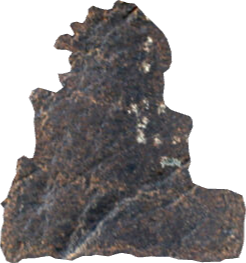 |
Gichi Nala 59:16 "Stūpa" (MANP 4, 2001: p. 242, pl. 76) https://katalog.ub.uni-heidelberg.de/titel/68214838 |
architecture sacred architecture stūpa architectural elements stūpa elements base of stūpa multiple platforms stepped base aṇḍa-dome semi-circular dome hemispheric |
Gichi Nala | GN059_16_IMG_3719 | ||
| GN059:16_Pennant |
 |
Very eroded and partially preserved petroglyph. Therefore the drawn outline of the pennant is approximate. |
architecture architectural elements stūpa elements connected features pennant |
Gichi Nala | GN059_16_IMG_3719 | ||
| GN066:4_Indeterminate |
 |
Gichi Nala 66:4 "Unclear" (MANP 4, 2001: p. 245) https://katalog.ub.uni-heidelberg.de/titel/68214838 |
indeterminate |
Gichi Nala | GN066_4_IMG_4480 | ||
| HN068:5_Mammal |
 |
Gichi Nala 68:5 "Caprinus?" (MANP 4, 2001: p. 248, pl. 62) https://katalog.ub.uni-heidelberg.de/titel/68214838 |
animal-zoomorph mammal animal features animal body parts feet |
Gichi Nala | GN068_5_7_IMG_4758 | ||
| GN068:7_Ibex |
 |
Gichi Nala 68:7 "Caprinus" (MANP 4, 2001: p. 248, pl. 62) https://katalog.ub.uni-heidelberg.de/titel/68214838 |
animal-zoomorph mammal ibex |
Gichi Nala | GN068_5_7_IMG_4758 | ||
| GN085:1_Indeterminate |
 |
Gichi Nala 85:1 "Unclear" (MANP 4, 2001: p. 254, pl. 78) https://katalog.ub.uni-heidelberg.de/titel/68214838 |
indeterminate |
Gichi Nala | GN085_1-3_IMG_0782 | ||
| GN085:2_Building? |
 |
Gichi Nala 85:2 "Unclear" (MANP 4, 2001: p. 254, pl. 79) https://katalog.ub.uni-heidelberg.de/titel/68214838 |
architecture architectural elements building |
Gichi Nala | GN085_1-3_IMG_0782 | ||
| GN085:3_Ibex |
 |
Gichi Nala 85:3 "Caprinus" (MANP 4, 2001: p. 254, pl. 62) https://katalog.ub.uni-heidelberg.de/titel/68214838 |
animal-zoomorph mammal ibex animal features animal body position bent legs |
Gichi Nala | GN085_1-3_IMG_0782 | ||
| GN056:7_Stūpa |
 |
Gichi Nala 56:7 "Stūpa" (MANP 4, 2001: p. 240, pl. 76 and XIb) https://katalog.ub.uni-heidelberg.de/titel/68214838 |
architecture sacred architecture stūpa architectural elements stūpa elements base of stūpa multiple platforms stepped base trapezoid aṇḍa-dome semi-circular dome hemispheric dome features false niche harmikā chattra/chattrāvalī yaṣṭi |
Gichi Nala | GN056_6-7_IMG_3280 | ||
| GN100:1_Building? |
 |
Gichi Nala 100:1 "Unclear" (MANP 4, 2001: p. 261, pl. 79) https://katalog.ub.uni-heidelberg.de/titel/68214838 |
architecture architectural elements building |
Gichi Nala | GN100_1_IMG_9566 | ||
| GN092:11_Disc |
 |
Gichi Nala 92:11 "Disc?" (MANP 4, 2001: p. 257, pl. 70) https://katalog.ub.uni-heidelberg.de/titel/68214838 |
ornament geometric motif disc |
Gichi Nala | GN092_11_IMG_0439 | ||
| GN095:9_Trident |
 |
Gichi Nala 95:9 "Trident" (MANP 4, 2001: p. 259, pl. 69) https://katalog.ub.uni-heidelberg.de/titel/68214838 |
artefact ceremonial object trident |
Gichi Nala | GN095_9_IMG_0028 | ||
| GN031:3_Stūpa |
 |
Gichi Nala 31:3 "Stūpa" (MANP 4, 2001: p. 226, pl. 74) https://katalog.ub.uni-heidelberg.de/titel/68214838 |
architecture sacred architecture stūpa architectural elements stūpa elements aṇḍa-dome semi-circular dome chattra/chattrāvalī yaṣṭi harmikā connected features crowning element-varṣasthālī trident |
Gichi Nala | GN031_3_IMG_5274 | ||
| GN050:2_Circle |
 |
Gichi Nala 50:2 "Disc" (MANP 4, 2001: p. 236, pl. 84) https://katalog.ub.uni-heidelberg.de/titel/68214838 |
ornament geometric motif circle |
Gichi Nala | GN050_2-22_IMG_2519 | ||
| GN050:3_Circle |
 |
Gichi Nala 50:3 "Disc" (MANP 4, 2001: p. 236, pl. 84) https://katalog.ub.uni-heidelberg.de/titel/68214838 |
ornament geometric motif circle |
Gichi Nala | GN050_2-22_IMG_2519 | ||
| GN051:6_Quadrilateral |
 |
Gichi Nala 51:6 "Quadrilateral" (MANP 4, 2001: p. 238, pl. 80) https://katalog.ub.uni-heidelberg.de/titel/68214838 |
quadrilateral |
Gichi Nala | GN051_6_IMG_2764 | ||
| GN059:3_Stūpa |
 |
Gichi Nala 59:3 "Stūpa?" (MANP 4, 2001: p. 241, pl. 76) https://katalog.ub.uni-heidelberg.de/titel/68214838 |
architecture sacred architecture stūpa stūpa elements multiple platforms rectangular bases aṇḍa-dome semi-circular dome |
Gichi Nala | GN059_3_IMG_3682 | ||
| GN067:13_Human figure |
 |
Gichi Nala 67:13 "Warrior?" (MANP 4, 2001: p. 247, pl. 54) https://katalog.ub.uni-heidelberg.de/titel/68214838 |
anthropomorph human figure anthropomorphic features human body position arm gesture arms raised |
Gichi Nala | GN067_11-14_IMG | ||
| GN067:17_Caprinus? |
 |
Simple animal image with one horn (caprinus?), not documented in MANP 4. |
caprinus animal-zoomorph mammal |
Gichi Nala | GN067_17_IMG_4597 | ||
| GN111:1_tamga? |
 |
Gichi Nala 111:1 Tamga? (MANP 4, 2001: p. 266, pl. 78) |
tamga |
Gichi Nala | GN111_1_IMG_8503 | ||
| GN111:13_Caprinus |
 |
Gichi Nala 111:13 Caprinus (MANP 4, 2001: p. 267, pl. 63) |
caprinus |
Gichi Nala | GN111_13-14_IMG_8514 | ||
| GN111:14_Unclear |
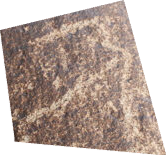 |
"Unclear" (MANP 4, 2001: p. 267) |
indeterminate |
Gichi Nala | GN111_13-14_IMG_8514 | ||
| GN111:18_Indeterminate |
 |
Gichi Nala 113:18 "Unclear" (MANP 4, 2001: p. 267, pl. 79 According to the catalog description, 8 (?) oval shapes are drawn above a foundation resembling a phallos |
indeterminate phallos of human |
Gichi Nala | GN111_18_IMG_8632 | ||
| GN112:2_Man |
 |
112:2 "Man" (MANP 4, 2001: p. 268, pl. 56) Comment in Catalog on 112:1 refers to unclear lines whcih could resemble writing, but no image is provided in MANP 4 |
anthropomorph male figure arms outstretched |
Gichi Nala | GN112_2-4_IMG_8296 | ||
| GN112:3_stūpa |
 |
Gichi Nala 112:3 Stūpa (MANP 4, 2001: p. 268, pl. 77) May belong in group with 112:A with Gichi Nala 112:4 |
stūpa multiple platforms aṇḍa-dome |
Gichi Nala | GN112_2-4_IMG_8296 | ||
| GN112:4_supernatural being |
 |
Gichi Nala 112:4 "Horned (?) Anthropomorphic Being" (MANP 4, p. 268, pl. 54) may belong in group 112:A with 112:3 Stūpa According to Ditte Bandini-König (MANP 4, §1.1, p. 72). the drawing may be older than 112:3 and could belong to a pre-C.E. period, but not to a prehistoric time. |
supernatural being horned(?) anthropomorphic being anthropomorph |
Gichi Nala | GN112_2-4_IMG_8296 | ||
| GN112:5_human figure |
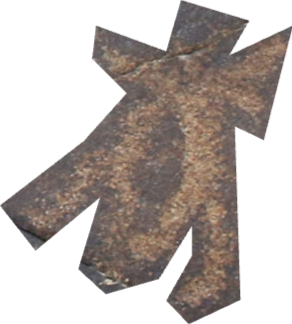 |
Gichi Nala 112:5 "Man" (MANP 4, 2001: p. 268, pl. 56) could illustrate a battle scene between two male figures, but the simple line is unclear |
human figure male figure arms outstretched leg head hand |
Gichi Nala | GN112_5_IMG_8125 | ||
| GN112:8_human figure |
 |
Gichi Nala 112:8 "Man" (MANP 4, p. 268, pl. 55) belongs to a group with Gichi Nala 112:9-11; according to the commentary in the catalog, the significance of the object helpd by the human figure is unclear, but if identifiable as a weapon, the figure may have illustrated a warrior. The outstretched arms end in hands with five distinct fingers and the legs end in feet with five toes. |
arms outstretched other anthropomorphic feature human figure male figure weapon |
Gichi Nala | GN112_8-11_IMG_8300 | ||
| GN112:9_Anthropomorph |
 |
Gichi Nala 112:9 (MANP 4, 2001: pp. 268-269, pl. 56) "human" belongs to group 112:B but is relatively more recent than the other drawings of human figure 112:8 and 112:10 and Caprinus 112:11 |
anthropomorph arms outstretched |
Gichi Nala | GN112_8-11_IMG_8300 | ||
| GN112:10_human figure |
 |
Gichi Nala 112:10 "human being" (MANP 4, 2001: p. 269, pl. 56) belongs to group 112:B with other human figures (GN112:8-9) and a carpinus (112:11), perhaps in the context of a hunting scene. The lines extensding down from the outstretched arms of this figure are distinctive and could be interpreted as feathers, according to the commentary in the catalog. |
human figure arms outstretched |
Gichi Nala | GN112_8-11_IMG_8300 | ||
| GN112:11_Caprinus |
 |
Gichi Nala 112:11 Caprinus (MANP 4, 2001: p. 269, pls. 63, 87) belongs to group 112:B with human figures in what might be interpreted as a hunting scene. |
caprinus horns |
Gichi Nala | GN112_8-11_IMG_8300 | ||
| GN112:13_human figure |
 |
Gichi Nala 112:13 "human being" (MANP 4, 2001: p. 269, pls. 56, 87) has outstretched arms ending in hands with five fingers, with a disproportionately long right hand. This figure belongs in group GN112:C with another human figure (GN112:14) |
human figure arms outstretched |
Gichi Nala | GN112_13-14_IMG_8265 | ||
| GN112:14_human figure |
 |
Gichi Nala 112:14 (MANP 4, 2001: p. 269, pl, 57, 87) is in a group (112:C) with human figure GN 112:13 |
human figure arms outstretched |
Gichi Nala | GN112_13-14_IMG_8265 | ||
| GN112:16_Building |
 |
Gichi Nala 112:16 'building' (MANP 4, 2001: p. 269, pl. 68) is not identified as a stūpa because the aṇḍa is not included, but the drawing of a stūpa may have been intended due to the presence of other architectural elements. |
building pennant stepped base |
Gichi Nala | GN112_16-17_IMG_8307 | ||
| GN112:17_Ornament? |
 |
Gichi Nala 112:17 "ornament?" (MANP 4, 2001: p. 269, pl. 70 [line drawing]) is an unusual drawing belonging to group 112:D (annotated in another image). In the commentary to the catalog, uncertain identifications of the outline as a helmet or as a vase are suggested, with vegetal motifs (half-palmettes?) hanging from each side. |
ornament vessel vegetal motif |
Gichi Nala | GN112_16-17_IMG_8307 | ||
| GN112:19_Indeterminate |
 |
Gichi Nala 112:19 "unclear" (MANP 4, 2001: p. 269, pl. 79) resembling half of a disc divided by a vertical line an subdivided by a horizontal line has an uncertain relation to the drawings included in Gichi Nala group 112:D |
indeterminate geometric motif |
Gichi Nala | GN112_17_21-25_IMG_8142 | ||
| GN112:20_Indeterminate |
 |
Gichi Nala 112:20 "unclear" lines of drawings slightly resemble Brāhmī writing (MANP 4, 2001: p. 269 [without illustration]) |
indeterminate |
Gichi Nala | GN112_17_21-25_IMG_8142 | ||
| GN112:22_Warrior? |
 |
GN112:22 "Warrior?" (MANP 4, 2001: p. 270, pl. 54) appears to be armed with a bow or sword. Although the drawing appears contiguous to the ornaments in Group 112:D, it is not part of the ensemble or scene. |
warrior armed wth bow armed with sword |
Gichi Nala | GN112_17_21-25_IMG_8142 | ||
| GN112:22_Warrior? |
 |
GN112:22 "Warrior?" (MANP 4, 2001: p. 270, pl. 54) appears to be armed with a bow or sword. Although the drawing appears contiguous to the ornaments in Group 112:D, it is not part of the ensemble or scene. |
warrior armed wth bow armed with sword |
Gichi Nala | GN112_17_21-25_IMG_8142 | ||
| GN112:21_ornament |
 |
Gichi Nala 112:21 "ornament" (MANP 4, p. 269, pls. 70, XIIIa) belongs with figures of ornaments and a human hand in group 112:D. A set of two half-palmettes (vegetal motifs that are shared by the oher petroglyphs in this group) are joined together by lines resembling a human stick figure, as noted in the commentary to the catalogue. |
ornament vegetal motif anthropomorphic features |
Gichi Nala | GN112_17_21-25_IMG_8142 | ||
| GN112:25_Ornament |
 |
Gichi Nala 121:25 "Ornament" (MANP 4, p. 270, pls. 70, XIIIa) consisting of a vegetal motif of two half-palmettes joined together by a a rounded line with another line extending outward from the design belongs to group 112:D with other figures having similar vegetal motifs |
ornament vegetal motif |
Gichi Nala | GN112_17_21-25_IMG_8142 | ||
| GN112:23_hand |
 |
Gichi Nala 112:23 'Hand' (MANP 4, 2001: p. 270, pls. 60, XIIIa) belongs with group of ornaments (112:D), which consists of a set of vegetal motifs. Ditte Bandini-König adds further commentary with a comparison to hand gestures on Sasanian seals (MANP 4, 2001: pp. 81-2, §1.9). |
hand anthropomorphic features body part |
Gichi Nala | GN112_17_21-25_IMG_8142 | ||
| GN112:24_Ornament |
 |
Gichi Nala 112:24 'Ornament' (MANP 4, 2001: p. 270, pls. 270, XIIIa) belongs with other figures with vegetal motifs of half-palmettes in group 112:D |
ornament vegetal motif |
Gichi Nala | GN112_17_21-25_IMG_8142 | ||
| GN112:26_human figure |
 |
Gichi Nala 112:26 'human being (MANP 4, 2001: p. 270, pls. 57, XIIIb) is depicted as if in motion with both feet pointing left and arms raised; the commentary in the catalog draws attention to features of the drawing of the figure's head, which could indicate ears or a special hairstyle. |
human figure arms raised hair type ears human body position head |
Gichi Nala | GN112_26_IMG_8366 | ||
| GN112:27_male figure |
 |
Gichi Nala 112:27 is a male figure (MANP 4, 2001: p. 170, pl. 55) |
male figure |
Gichi Nala | GN112_27_IMG_8135 | ||
| GN112:29_stūpa |
 |
Gichi Nala 112:29 Stūpa (MANP 4, 2001: p. 270, pls. 77, XIIIc) is an especially detailed petroglyph that clearly shows many architectural components and features in the design of stūpa ornamentation, although a chattrāvalī with discs attached to the yaṣṭi is not illustrated. |
stūpa aṇḍa-dome garland point(s) in the dome horseshoe/U-form trapezoid multiple platforms platform ornamentation harmikā bell-ghaṇṭā crowning element-varṣasthālī trident crescent moon yaṣṭi |
Gichi Nala | GN112_29_IMG_8209 | ||
| GN112:30_caprinus |
 |
GN112:30 Caprinus (MANP 4, 2001: p. 270. pl. 63, 88) forms a pair with another caprinus (GN112:31) in GN112: group E (intra-species group of animals) |
horns raised tail caprinus |
Gichi Nala | GN112_30-31_IMG_8360 | ||
| GN131:1_Caprinus |
 |
Gichi Nala 1i2:31 caprinus (MANP 4, 2001: p. 668, 270, pls. 63, 88) forms a pair in an intra-species group of caprini with GN 112:30 (GN 113: Group E). Traces of another drawing can be seen to the right of this drawing in the image, but the indistinct lines are not annotated. |
recurved horns caprinus |
Gichi Nala | GN112_30-31_IMG_8360 | ||
| GN112:33_hunter |
 |
Gichi Nala 112:33 hunter (MANP 4, 2001: pp. 270-271, pls. 54, 88) belongs to a scene (112:F) with a caprinus (112:34) ; the arms of the figure are shown in the position of bending a bow to shoot an arrow in the direction of the caprinus |
hunter bow arrow |
Gichi Nala | GN112_33-34_IMG_8219 | ||
| GN112:34_caprinus |
 |
Gichi Nala 112:34 Caprinus (MANP 4, 2001: p. 271, pls. 63, 88) belong to a hunting scene (112:F) with a hunter in the position of shooting an arrow (GN 112:33). The body if the caprinus is drawn in outline with horns bending towards the back and a short tail. |
set of horns caprinus |
Gichi Nala | GN112_33-34_IMG_8219 | ||
| GN113_8_dog |
 |
dog |
Gichi Nala | GN113_7-11_IMG_8054 | |||
| GN113:9_markhor |
 |
horns markhor |
Gichi Nala | GN113_7-11_IMG_8054 | |||
| GN113:10_hunter |
 |
hunter |
Gichi Nala | GN113_7-11_IMG_8054 | |||
| GN114:3_indeterminate |
 |
indeterminate triangle |
Gichi Nala | GN114_1-5_IMG_8013 | |||
| GN114:1_ornament vegetal motif |
 |
vegetal motif |
Gichi Nala | GN114_1-5_IMG_8013 | |||
| GN114:2_ornament vegetal motif |
 |
vegetal motif |
Gichi Nala | GN114_1-5_IMG_8013 | |||
| GN114:4_caprinus |
 |
caprinus recurved horns tail head of animal |
Gichi Nala | GN114_1-5_IMG_8013 | |||
| GN114:5_caprinus |
 |
horns caprinus tail |
Gichi Nala | GN114_1-5_IMG_8013 | |||
| GN114:6_human figure |
 |
human figure arms outstretched |
Gichi Nala | GN114_6_IMG_8018 | |||
| GN115:4_horse |
 |
horse mane ears eye head of animal saddle |
Gichi Nala | GN115_4-5_IMG_7944 | |||
| GN115:5_tamga |
 |
tamga |
Gichi Nala | GN115_4-5_IMG_7944 | |||
| GN116:1_building |
 |
building |
Gichi Nala | GN116_1_IMG_7868 | |||
| GN118:1_indeterminate |
 |
indeterminate |
Gichi Nala | GN118_1-5_IMG_7612 | |||
| GN118:2_disc |
 |
ornamented disc cross |
Gichi Nala | GN118_1-5_IMG_7612 | |||
| GN118:5_horse |
 |
mane tail ears horse |
Gichi Nala | GN118_1-5_IMG_7612 | |||
| GN118:3_caprinus |
 |
recurved horns bent legs caprinus |
Gichi Nala | GN118_1-5_IMG_7612 | |||
| GN118:4_ibex |
 |
horns recurved horns set of horns ibex |
Gichi Nala | GN118_1-5_IMG_7612 | |||
| GN119:1_giant |
 |
giant head leg arm gesture headdress supernatural being other object |
Gichi Nala | GN119_1_IMG_7560 | |||
| GN121:1_indeterminate |
 |
indeterminate building tamga |
Gichi Nala | GN121_1_IMG_7464 | |||
| GN121:2_indeterminate |
 |
indeterminate geometric motif |
Gichi Nala | GN121_2_IMG_7494 | |||
| GN122:1_building |
 |
building building components trident crescent moon pennant rectangular bases |
Gichi Nala | GN122_1_IMG_7359 | |||
| GN122:4_indeterminate building |
 |
arch dome features building indeterminate |
Gichi Nala | GN122_4-5_IMG_7327 | |||
| GN122:4_human figure? |
 |
human figure head arm gesture |
Gichi Nala | GN122_4-5_IMG_7327 | |||
| GN123:1_indeterminate |
 |
indeterminate tamga |
Gichi Nala | GN123_1-2_IMG_7390 | |||
| GN123:2_animal |
 |
animal-zoomorph head of animal tail position tail |
Gichi Nala | GN123_1-2_IMG_7390 | |||
| GN124:1_stūpa? |
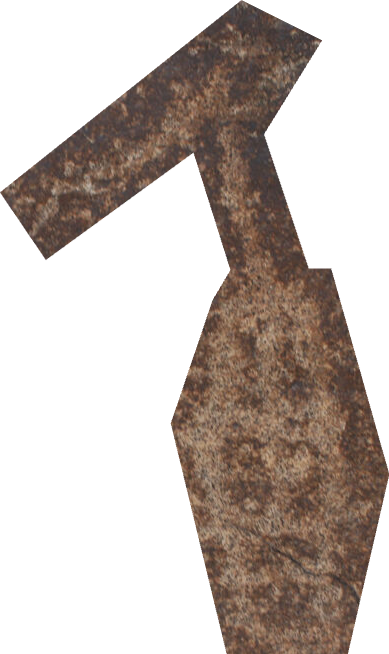 |
stūpa elements multiple platforms rectangular bases horseshoe/U-form pennant yaṣṭi stūpa |
Gichi Nala | GN124_1_IMG_7301 | |||
| GN124:2_stūpa? |
 |
rectangular bases semi-circular dome hemispheric trident stūpa |
Gichi Nala | GN124_2_IMG_7274 | |||
| GN125:1_hand |
 |
hand fingered hands |
Gichi Nala | GN125_1_IMG_7235 | |||
| GN126:1_hoof print? |
 |
hoofprint indeterminate |
Gichi Nala | GN126_1-3_IMG_7196 | |||
| GN126:3_hand |
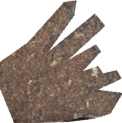 |
hand fingered hands |
Gichi Nala | GN126_1-3_IMG_7196 | |||
| GN126:3_hand |
 |
hand fingered hands |
Gichi Nala | GN126_1-3_IMG_7196 | |||
| GN127:3_hand |
 |
hand fingered hands |
Gichi Nala | GN127_3_IMG_7152 | |||
| GN128:1_building |
 |
building building components rectangular bases points yaṣṭi |
Gichi Nala | GN128_1_IMG_6769 | |||
| GN128:2_trident? |
 |
indeterminate trident flower |
Gichi Nala | GN128_2_IMG_6759 | |||
| GN130:1_stūpa |
 |
stūpa stūpa elements aṇḍa-dome semi-circular dome single platform chattra/chattrāvalī yaṣṭi |
Gichi Nala | GN130_1-2_IMG_6871 | |||
| GN130:2_caprinus |
 |
head of animal horns recurved horns tail raised tail caprinus |
Gichi Nala | GN130_1-2_IMG_6871 | |||
| GN130:3_caprinus |
 |
head of animal horns recurved horns tail bent legs caprinus |
Gichi Nala | GN130_3_IMG_6885 | |||
| GN130:5_trident |
 |
trident |
Gichi Nala | GN130_4-5_IMG_6822 | |||
| GN130:6_trident |
 |
trident artefact |
Gichi Nala | GN130_6-9_IMG_6811 | |||
| GN130:7_trident |
 |
artefact trident |
Gichi Nala | GN130_6-9_IMG_6811 | |||
| GN130:9_trident |
 |
artefact trident |
Gichi Nala | GN130_6-9_IMG_6811 | |||
| GN131:1_disc |
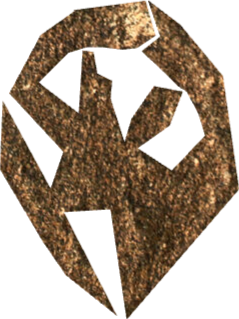 |
ornamented disc astral motif geometric motif star / pentagram |
Gichi Nala | GN131_1_IMG_7103 | |||
| GN132:1_indeterminate |
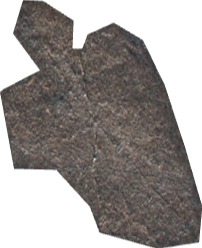 |
indeterminate ornament |
Gichi Nala | GN132_1-2_IMG_7064 | |||
| GN132:2_human figure |
 |
human figure arm gesture one arm raised phallos leg |
Gichi Nala | GN132_1-2_IMG_7064 | |||
| GN133:3_stūpa? |
 |
stūpa aṇḍa-dome hemispheric yaṣṭi |
Gichi Nala | GN133_1_IMG_6999 | |||
| GN134:1_markhor? |
 |
head of a markhor horns of a markhor caprinus markhor raised tail |
Gichi Nala | GN134_1-2_IMG_7052 | |||
| GN134:2_hunter |
 |
hunter armed wth bow phallos |
Gichi Nala | GN134_1-2_IMG_7052 | |||
| GN135:1_foot |
 |
foot |
Gichi Nala | GN135_1_IMG_0892 | |||
| GN135:2_building? |
 |
building indeterminate quadrilateral |
Gichi Nala | GN135_2_IMG_0959 | |||
| GN136:1_rectangle |
 |
quadrilateral geometric motif |
Gichi Nala | GN136_1-2_IMG_0993 | |||
| GN136:2_human figure |
 |
human figure male figure feet hand arm gesture |
Gichi Nala | GN136_1-2_IMG_0993 | |||
| GN137:1_horse |
 |
horse tail head of animal |
Gichi Nala | GN137_1_IMG_1074 | |||
| GN138:1_building? |
 |
indeterminate building quadrilateral |
Gichi Nala | GN138_1_IMG_1117 | |||
| GN139:1_building |
 |
stūpa elements dome features multiple platforms rectangular bases |
Gichi Nala | GN139_1-4_IMG_1128 | |||
| GN139:3_stūpa? |
 |
stūpa elements building dome features rectangular bases trident |
Gichi Nala | GN139_1-4_IMG_1128 | |||
| GN139:2_caprinus |
 |
caprinus recurved horns |
Gichi Nala | GN139_1-4_IMG_1128 | |||
| GN139:4_caprinus |
 |
bent legs horns raised tail caprinus |
Gichi Nala | GN139_1-4_IMG_1128 | |||
| GN145:4_indeterminate |
 |
indeterminate tamga |
Gichi Nala | GN145_4_IMG_6377 | |||
| GN145:8_animal |
 |
horns head regardant animal-zoomorph |
Gichi Nala | GN145_7-8_12_IMG_6322 | |||
| GN145:12_male |
 |
human figure arms outstretched hand gesture |
Gichi Nala | GN145_7-8_12_IMG_6322 | |||
| GN150:4_cross |
 |
cross geometric motif |
Gichi Nala | GN150_1-6_IMG_6119 | |||
| GN150:6_animal |
 |
head of animal tail opened mouth-jaw tail position animal-zoomorph |
Gichi Nala | GN150_1-6_IMG_6119 | |||
| GN154:1_indeterminate |
 |
indeterminate geometric motif |
Gichi Nala | GN154_2-4_IMG_5930 | |||
| GN154:4_stūpa |
 |
stūpa stepped base horseshoe/U-form chattra/chattrāvalī multiple umbrellas aṇḍa-dome |
Gichi Nala | GN154_2-4_IMG_5930 | |||
| GN157:21_indeterminate |
 |
Gichi Nala 157:21 (MANP 4, 2001: 293) resemble signs of writing below Brāhmī inscriptions GN 157:19-20, but appear to belong to a more recent period based on lighter repatination. |
indeterminate |
Gichi Nala | GN157_19-20_IMG_5606_curated |
| Title | Image | Description | Notes | Tags | Collection | Image Set | |
|---|---|---|---|---|---|---|---|
| GN003:11_Brāhmī |
 |
1. k[ṛ]tam mayā si- 2. ṅgha[kena] "made by me, Siṅghaka" | Gichi Nala Brāhmī 3:11 published by Oskar von Hinüber (MANP 4 , 2001: pp. 211-212, pl. 94) https://doi.org/10.11588/diglit.37089#0229 |
Sanskrit northern class Brāhmī donative anthroponym hypocorism name Gandharan Brāhmī name anthroponym hypocorism Buddhist donative 'made by' |
Gichi Nala | GN003_10-11_IMG_0572 | |
| GN003:18_Brāhmī | | |
 |
1, # kṛtaṃ mayā 2. [priyavarme] 3. na : "Made by me, Priyavarma" | Gichi Nala Brāhmī inscription 3:18 published by Oskar von Hinüber (MANP 4, 2001, p. 212, pl. 94) https://digi.hadw-bw.de/view/manp4/0230/image,info |
Sanskrit northern class Brāhmī Gandharan Brāhmī donative anthroponym name inflected form name anthroponym compound name Buddhist 'made by' |
Gichi Nala | GN003_18-19_IMG_0855 | |
| GN031:2_Brāhmī |
 |
# kṛtaṃ mayā saṅga[m]itrena "Made by me, Saṅgamitra" | Gichi Nala Brāhmī inscription 31:2 published by Oskar von Hinüber (MANP 4, 2001, p. 226, pl. 95) https://digi.hadw-bw.de/view/manp4/0244/image,info |
Sanskrit donative compound transcription inflected form name appellative anthroponym compound name Buddhist 'made by' |
Gichi Nala | GN031_1-2_IMG_5269 | |
| GN003:3_Brāhmī |
 |
1. kr̥ta yā gajesya 2. ma "Made by me, Gaja" | Gichi Nala Brāhmī inscription 3:3 published by O.v. Hinüber (MANP 4, 2001: p. 210, pl. 94 and VIIIa) https://digi.hadw-bw.de/view/manp4/0228/image,info |
Sanskrit northern class Brāhmī Gandharan Brāhmī genitive case name anthroponym Buddhist 'made by' |
Gichi Nala | GN003_2-3_IMG_0703 | |
| GN045:1_Brāhmī |
 |
Priyerava | Gichi Nala Brāhmī inscription 45:1 published by Oskar von Hinüber (MANP 4, 2001, p. 232, pl. 97) https://digi.hadw-bw.de/view/manp4/0250/image,info |
Sanskrit Brahmi northern class Brāhmī name compound |
Gichi Nala | GN045_1_IMG_3462 | |
| GN052:1_Brāhmī |
 |
kṣa | Gichi Nala Brāhmī inscription 52:1 (MANP 4, 2001, p. 238, pl. 98) https://digi.hadw-bw.de/view/manp4/0256/image,info |
Brahmi northern class Brāhmī monogram |
Gichi Nala | GN052_1-2_IMG_2805 | |
| GN052:2_Brāhmī |
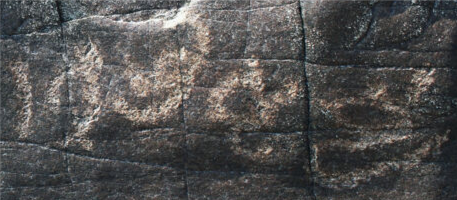 |
ratnaśreṣṭasya | Gichi Nala Brāhmī inscription 14:1 published by Oskar von Hinüber (MANP 4, 2001, pp. 238-239, pl. 98) https://digi.hadw-bw.de/view/manp4/0257/image,info |
Sanskrit Brahmi name genitive case anthroponym compound name compound Tatpurusa |
Gichi Nala | GN052_1-2_IMG_2805 | |
| GN003:14_Brāhmī |
 |
1. # devadharmo yaṃ 2. siṅgha[sya] "Religious offering of Siṅgha" | Gichi Nala Brāhmī inscription 003:14 published by Oskar von Hinüber (MANP 4, 2001, p. 212, pl. 94) https://digi.hadw-bw.de/view/manp4/0230/image,info |
Sanskrit northern class Brāhmī Gandharan Brāhmī donative genitive case anthroponym name genitive case appellative anthroponym Buddhist 'religious offering' donative |
Gichi Nala | GN003_12-16_IMG_0515 | |
| GN023:4_Brāhmī |
 |
# devadharmo yaṃ ? ? ? ? ? | ? ? ? [sya] | Gichi Nala Brāhmī inscription 24:1 published by Oskar von Hinuber (MANP 4, 2001, p. 223, pls. 95 and Xa) https://digi.hadw-bw.de/view/manp4/0241/image,info |
Sanskrit Brahmi northern class Brāhmī Gandharan Brāhmī donative phrase Buddhist donative 'religious offering' |
Gichi Nala | GN023_1_4_IMG_1487 | |
| GN013:2_Brāhmī |
 |
1. namo buddhāya | 2. namo ddharmāya | Gichi Nala Brāhmī inscription 013:2 published by Oskar von Hinüber (MANP 4, 2021, pp. 218-19, pl. 95) https://digi.hadw-bw.de/view/manp4/0237/image,info |
inflected form word or phrase phrase theonym title Buddhist 'homage to' Gandharan Brāhmī |
Gichi Nala | GN013_1-2_IMG_4044 | |
| GN053:1_Brāhmī ratnaśreṣṭasya |
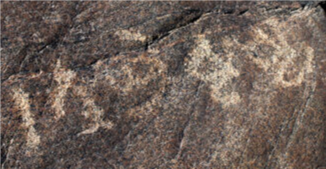 |
Gichi Nala Brāhmī inscription 53:1 published by Oskar von Hinüber (MANP 4, 2001, p. 239, pl. 98) https://digi.hadw-bw.de/view/manp4/0257/image,info |
Sanskrit Brahmi Gandharan Brāhmī name genitive case anthroponym compound name compound bahuvrihi |
Gichi Nala | GN053_1_IMG_2882 | ||
| GN045:2_Brāhmī |
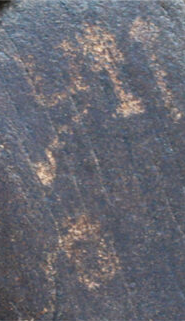 |
1. prakara 2. [va] | Gichi Nala Brāhmī inscription 45:2 published by Oskar von Hinüber (MANP 4, 2001, p. 233, pl. 97) https://digi.hadw-bw.de/view/manp4/0251/image,info |
Sanskrit northern class Brāhmī name anthroponym |
Gichi Nala | GN045_2_IMG_3464 | |
| GN024:2_Brāhmī |
 |
namo buddhāya | Gichi Nala Brāhmī inscription 24:2 published by Oskar von Hinüber (MANP 4, 2001: p. 223, pl 95) https://digi.hadw-bw.de/view/manp4/0241/image,info |
Sanskrit Brahmi devotional inflected form phrase theonym Buddhist 'homage to' |
Gichi Nala | GN024_2_IMG_1418 | |
| GN037:1_Brāhmī |
 |
śr(*ī) # priya ? + | Gichi Nala Brāhmī inscription 37:1 published by Oskar von Hinüber (MANP 4, 2001, p. 228, pl. 96) https://digi.hadw-bw.de/view/manp4/0246/image,info |
language Indo-Iranian Indo-Aryan Sanskrit writing system abugida Brahmi northern class Brāhmī linguistic unit name |
Gichi Nala | GN037_1-2_IMG_4120 | |
| GN045:3_Brāhmī |
 |
kṣatra[va] [///] | Gichi Nala Brāhmī inscription 45:3 published by Oskar von Hinüber (MANP 4, 2001, p. 233, pl. 97) https://digi.hadw-bw.de/view/manp4/0251/image,info |
Sanskrit Brahmi title |
Gichi Nala | GN045_3_IMG_3460 | |
| GN055:2_Brāhmī |
 |
1. namo [ratna] 2. ś[i]kh[i] | Gichi Nala Brāhmī inscription 55:2 published by Oskar von Hinüber (MANP 4, 2001, p. 239, pl. 98) https://digi.hadw-bw.de/view/manp4/0257/image,info |
Sanskrit Brahmi northern class Brāhmī version, edition, or translation name theonym phrase Buddhist 'homage to' |
Gichi Nala | GN055_2_4_IMG_2977 | |
| GN032:1_Brāhmī |
 |
1. (*vi[carati]) | [kadrāka] | 2. da | ++ | +[sa]śūra dī[vi](*ra) | 3. śrī ? ? carati "Here wanders ... -śūra, the scribe. Śrī ... wanders" | Gichi Nala Brāhmī inscription 32:1 published by Oskar von Hinüber (MANP 4, 2001, pp. 226-227, pl. 95) https://digi.hadw-bw.de/view/manp4/0245/image,info |
Sanskrit title name name anthroponym honorific motion verb title visitor's arrival northern class Brāhmī |
Gichi Nala | GN032_1_4_IMG_4223 | |
| GN038:10_Brāhmī |
 |
śa[r]ilavridha | Gichi Nala Brāhmī inscription 38:10 published by Oskar von Hinüber (MANP 4, 2001, p. 230, pl. 96) https://digi.hadw-bw.de/view/manp4/0248/image,info |
Sanskrit Brahmi northern class Brāhmī compound name proper noun anthroponym |
Gichi Nala | GN038_10_18_IMG_3987 | |
| GN038:18_Brāhmī |
 |
namo buddhāya | Gichi Nala Brāhmī inscription 38:18 published by Oskar von Hinüber (MANP 4, 2001, p. 231, pl. 96) https://digi.hadw-bw.de/view/manp4/0249/image,info |
Sanskrit Brahmi northern class Brāhmī inflected form phrase proper noun theonym Buddhist 'homage to' |
Gichi Nala | GN038_10_18_IMG_3987 | |
| GN036:1_Brāhmī |
 |
? ? ramitra [?] | Gichi Nala Brāhmī inscription 36:1 published by Oskar von Hinüber (MANP 4, 2001, p. 2228, pl. 96) https://digi.hadw-bw.de/view/manp4/0246/image,info |
Sanskrit writing system Brahmi northern class Brāhmī |
Gichi Nala | GN036_1_IMG_4152 | |
| GN045:5_Brāhmī |
 |
śāntapriyasya | Gichi Nala Brāhmī inscription 45:5 published by Oskar von Hinüber (MANP 4, 2001, p. 233, pl. 97) |
Sanskrit Brahmi northern class Brāhmī name genitive case anthroponym appellative compound |
Gichi Nala | GN045_5_IMG_3430 | |
| GN046:3_Brāhmī |
 |
[nama sarvabuddhāya] | Gichi Nala Brāhmī inscription 14:1 published by Oskar von Hinüber (MANP 4, 2001, p. 233, pl. 97) https://digi.hadw-bw.de/view/manp4/0251/image,info |
Sanskrit inflected form phrase compound Buddhist 'homage to' Brāhmī northern class Brāhmī |
Gichi Nala | GN046_3_IMG_3374 | |
| GN038:17_Brāhmī |
 |
illegible | Gichi Nala Brāhmī inscription 38:17 published by Oskar von Hinüber (MANP 4, 2001, p9. 230-231, pl. 96) https://digi.hadw-bw.de/view/manp4/0248/image,info |
Sanskrit Brahmi illegible |
Gichi Nala | GN038_17_IMG_3868 | |
| GN046:2 Brāhmī |
 |
# nama sarvabuddhā[ya] | Gichi Nala Brāhmī inscription 46:2 published by Oskar von Hinüber (MANP 4, 2001, p. 233, pl. 97) https://digi.hadw-bw.de/view/manp4/0251/image,info |
inflected form phrase compound Tatpurusa Buddhist 'homage to' Sanskrit Brāhmī northern class Brāhmī |
Gichi Nala | GN046_2_IMG_3384 | |
| GN015:1_Brāhmī |
 |
[uḍra]rajñaṃkṣatravavihāra : | Gichi Nala Brāhmī inscription 15:1 published by Oskar von Hinüber (Gichi Nala Catalog MANP 4, 2001, p. 219, pl. 95 [https://digi.hadw-bw.de/view/manp4/0237/image,info]); "Brāhmī inscriptions on the history and culture of the Upper Indus Valley," Antiquities of Northern Pakistan: reports and studies, vol. 1, ed. Karl Jettmar. Mainz: P. von Zabern, 1989, p. 54, no. 54b [https://digi.hadw-bw.de/view/anp1text/0116/image,info], pl. 112 [https://digi.hadw-bw.de/view/anp1plates/0078/image]; see also Harry Falk, review of review of Die Felsbildstation Hodar (MANP 3) and Die Felsbildstationen Shing Nala und Gichi Nala (MANP 4), Orientalistische Literaturzeitung 96 (2001), 753-758 |
Sanskrit writing system abugida Brahmi northern class Brāhmī Gandharan Brāhmī name toponym name toponym title compound Tatpurusa Buddhist |
Gichi Nala | GN015_1_IMG_5415 | |
| GN078:4_Monogram_Brahmī |
 |
śrī | Gichi Nala 78:4 "Monogram, Brāhmī inscription" (MANP 4, 2001: p. 252, pl. 106) https://katalog.ub.uni-heidelberg.de/titel/68214838 |
monogram |
Gichi Nala | GN078_4_IMG_5537 | |
| GN046:1_Brāhmī |
 |
illegible | Gichi Nala Brāhmī? inscription 46:1 published by Oskar von Hinüber (MANP 4, 2001, p. 233, pl. 97) https://digi.hadw-bw.de/view/manp4/0251/image,info |
illegible Brāhmī |
Gichi Nala | GN046_1_IMG_3386 | |
| GN055:3_Brāhmī |
 |
1. namo ca[kṣu] 2. pariśodhanarājā | Gichi Nala Brāhmī inscription 55:3 published by Oskar von Hinüber (MANP 4, 2001, p. 239, pl. 98) https://digi.hadw-bw.de/view/manp4/0257/image,info |
Sanskrit Brahmi name theonym phrase title compound name compound bahuvrihi Buddhist 'homage to' |
Gichi Nala | GN055_3_IMG_3071 | |
| GN056:6_Brāhmī |
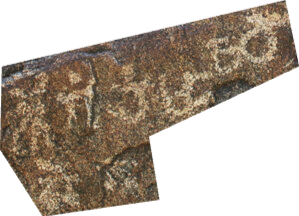 |
1. kritaṃ caṃdra[va]va 2. mena "Made by Candravarma" | Gichi Nala Brāhmī inscription 56:6 published by Oskar von Hinüber (MANP 4, 2001, p. 240, pl. 98 and XIb) https://digi.hadw-bw.de/view/manp4/0258/image,info; https://digi.hadw-bw.de/view/manp4/0531/image,info |
Sanskrit transcription inflected form word or phrase anthroponym compound name Buddhist donative 'made by' |
Gichi Nala | GN056_6-7_IMG_3280 | |
| GN018:1_Brāhmī |
 |
loś[v]arade[va] | Gichi Nala Brāhmī inscription 18:1 published by Oskar von Hinüber (MANP 4, 2001, p. 220, pl. 95) https://digi.hadw-bw.de/view/manp4/0238/image,info |
Sanskrit name theonym Brāhmī |
Gichi Nala | GN018_1_IMG_1941 | |
| GN047:1 Brāhmī |
 |
1. # namo bu | 2. ddhāya | 3. nānasya | Gichi Nala Brāhmī inscription 14:1 published by Oskar von Hinüber (MANP 4, 2001, p. 233-4, pl. 97) https://digi.hadw-bw.de/view/manp4/0251/image,info |
Sanskrit Brahmi northern class Brāhmī name theonym inflected form genitive case name anthroponym word or phrase phrase compound Buddhist devotional 'homage to' |
Gichi Nala | GN047_1_IMG_2300 | |
| GN018:2_Brāhmī |
 |
vicarati ryamritedrālaṃkāra "Ārya Amṛtendrālaṃkāra wanders" | Gichi Nala Brāhmī inscription 18:2 published by Oskar von Hinüber (MANP 4, 2001, p. 220, pl. 95 https://digi.hadw-bw.de/view/manp4/0238/image,info |
Sanskrit northern class Brāhmī name appellative anthroponym phrase motion verb visitor's arrival honorific |
Gichi Nala | GN018_2_IMG_1955 | |
| GN051:1_Brāhmī |
 |
jinaruce | Gichi Nala Brāhmī inscription 51:1 published by Oskar von Hinüber (MANP 4, 2001, p. 238, pl. 97) https://digi.hadw-bw.de/view/manp4/0256/image,info |
Sanskrit name anthroponym compound bahuvrihi northern class Brāhmī |
Gichi Nala | GN051_1_IMG_2686 | |
| GN051:7_Brāhmī |
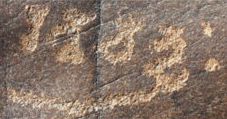 |
ratnacandraḥ | Gichi Nala Brāhmī inscription 51:7 published by Oskar von Hinüber (MANP 4, 2001, p. 238, pl. 97) https://digi.hadw-bw.de/view/manp4/0256/image,info |
Sanskrit name nominative case anthroponym compound bahuvrihi |
Gichi Nala | GN051_7_IMG_2762 | |
| GN024:1_Brāhmī |
 |
dharmahetuvaradā | Gichi Nala Brāhmī inscription 24:1 published by Oskar von Hinuber (MANP 4, 2001, p. 223, pl. 95) https://digi.hadw-bw.de/view/manp4/0241/image,info |
Sanskrit phrase compound Buddhist devotional exhortation |
Gichi Nala | GN024_1_IMG_1402 | |
| GN030:1_Brāhmī |
 |
1. devadharmo yaṃ saṅgamitrasya sārdhaṃ puṇajai[na]rya | 2. [sya] "This is the religious offering of Saṅghamitra together with Puṇajainarya" | Gichi Nala Brāhmī inscription 30:1 published by Oskar von Hinüber (MANP 4, 2001, p. 224, pl. 95) https://digi.hadw-bw.de/view/manp4/0242/image,info |
Sanskrit Brahmi donative compound name genitive case name anthroponym compound name Buddhist donative 'religious offering' |
Gichi Nala | GN030_1_IMG_5365 | |
| GN038:14_Brāhmī |
 |
1. ? namo jina ? [varā] | 2. ya | [?] śrīvatsa | Gichi Nala Brāhmī inscription 38:14 published by Oskar von Hinüber (MANP 4, 2001, p. 230, pl. 96) https://digi.hadw-bw.de/view/manp4/0248/image,info |
Sanskrit Brahmi northern class Brāhmī inflected form word or phrase proper noun theonym Tatpurusa religious 'homage to' non-Buddhist religion |
Gichi Nala | GN038_13-15_IMG_4012 | |
| GN038:15_Brāhmī |
 |
śrī | Gichi Nala Brāhmī inscription 38:15 published by Oskar von Hinüber (MANP 4, 2001, p. 230, pl. 96) https://digi.hadw-bw.de/view/manp4/0248/image,info |
Sanskrit northern class Brāhmī honorific |
Gichi Nala | GN038_13-15_IMG_4012 | |
| GN001:7_Brāhmī |
 |
# dharmahetuvaradā "Granting of wishes (-varadā) on the basis of (-hetu-) Dharma" | Gichi Nala Brāhmī inscription 14:1 published by Oskar von Hinüber (MANP 4, 2001, p. 209, pl. 94) https://doi.org/10.11588/diglit.37089#0227 ; (ANP 1, p. 77, no. 69g, line d) https://doi.org/10.11588/diglit.36954#0138 |
Sanskrit northern class Brāhmī Gandharan Brāhmī message phrase Buddhist exhortation |
Gichi Nala | GN001_7_IMG_1084.jpg | |
| GN035:1_Brāhmī |
 |
# valavirisya | Gichi Nala Brāhmī inscription 35:1 published by Oskar von Hinüber (MANP 4, 2001, p. 228, pl. 96) https://digi.hadw-bw.de/view/manp4/0246/image,info |
Sanskrit name genitive case name compound appellative anthroponym donative northern class Brāhmī |
Gichi Nala | GN035_1_IMG_0229 | |
| GN039:1_Brāhmī |
 |
1. # prāṇa 2. # prāṇavīra | Gichi Nala Brāhmī inscription 39:1 published by Oskar von Hinüber (MANP 4, 2001, p. 231, pl. 96) https://digi.hadw-bw.de/view/manp4/0249/image,info |
Sanskrit Brahmi northern class Brāhmī name proper noun anthroponym compound nominal |
Gichi Nala | GN039_1-2_IMG_2178 | |
| GN039:2 Brāhmī |
 |
# d[ā]sa[ḍa] | Gichi Nala Brāhmī inscription 39:2 published by Oskar von Hinüber (MANP 4, 2001, p. 231, pl. 96) |
Sanskrit Brahmi northern class Brāhmī |
Gichi Nala | GN039_1-2_IMG_2178 | |
| GN001:3_Brāhmī |
 |
1. # dharmahetuvaradā 2. # dharmahetuvara[dā] 3. dharmahetuvaradā "Granting of wishes (-varadā) on the basis of (-hetu-) Dharma" | Gichi Nala Brāhmī inscription 001:3 published by Oskar von Hinüber (MANP 4, 2001: p. 209, pl. 94 (https://digi.hadw-bw.de/view/manp4/0227/image,info) and "Buddhistische Inschriften aus dem Tal des oberen Indus," Antiquities of Northern Pakistan: reports and studies 1, ed. Karl Jettmar, Mainz: P. von Zabern, 1989, no. 69g, pp. 76,-77, pl. 144 [https://doi.org/10.11588/diglit.36955#0094] |
Sanskrit northern class Brāhmī Gandharan Brāhmī Brahmi Gandharan Brāhmī Buddhist ritual formula phrase |
Gichi Nala | GN001_3_IMG_1101 | |
| GN001:1_Brāhmī |
 |
1. # namo [bhagavate ra](*tna)[ku]sumaguṇa- 2. sāgaraveḍurya(*ka)na(*ka)girisuvarṇa- 3. (*k)ā[ṃca](*na)prabhā[sa]śrīye tathāgatā- 4. ya rhate samyakssambuddhāya "Veneration (namo) of the worthy (arhate) fully enlightened (samyakssambuddhāya) Tathāgata, the blessed (bhagavate) Ratnakusumaguṇasāgaraveḍūryakanakagirisuvarṇakāṃcanaprabhāsa-śrī" | Transcription: # namo [bhagavate ra](*tna)[ku]sumaguṇa- | sāgaraveḍurya(*ka)na(*ka)girisuvarṇa | (*k)ā[ṃca](*na)prabhā[sa]śrīye tathāgatā | ya rhate samyakssambuddhāya |
Gandharan Brāhmī northern class Brāhmī Sanskrit theonym name title compound dedication Buddhist devotional 'homage to' name theonym compound title |
Gichi Nala | GN001_1_IMG_0930 | |
| GN003:5 Brāhmī |
 |
1. [#] devadha- |rma yaṃ udevī- 2. rasya "Religious offering of Udevīra" | Gichi Nala Brāhmī inscription 003:5 published by Oskar von Hinüber (MANP 4, 2001, pp. 210-211, pl. 94) records a donation by Udevīra of stūpa petroglyph 003:4 with the deyadharma/devadharma donative formula; although the inscription is unclear in the annotated image, the black-and-white photo in MANP 4, pl. 94 is sufficiently clear to confirm the reading. https://doi.org/10.11588/diglit.37089#0228 |
Sanskrit donative Brahmi northern class Brāhmī genitive case name anthroponym Buddhist 'religious offering' |
Gichi Nala | GN003_4-5_IMG_0712 | |
| GN013:2_Brāhmī |
 |
1. namo buddhāya | 2. namo ddharmāya | Gichi Nala Brāhmī inscription 13:2 published by Oskar von Hinüber (MANP 4, 2001, pp. 218-219, pl. 95) https://doi.org/10.11588/diglit.37089#0236 |
Sanskrit inflected form phrase theonym Buddhist 'homage to' Gandharan Brāhmī |
Gichi Nala | GN013_2_IMG_4074 | |
| GN057:1_Brāhmī |
 |
[d]ināde[va] | Gichi Nala Brāhmī inscription 57:1 published by Oskar von Hinüber (MANP 4, 2001, p. 240, pl. 98) https://doi.org/10.11588/diglit.37089#0258; O.v. Hinüber reads [bhināve]va and comments that the reading and interpretation are unclear, while also indicatiing that reading dinādeva is possible. The reading remains uncertain. |
Sanskrit name compound Brāhmī |
Gichi Nala | GN057_1_IMG_5466 | |
| GN064:1_Brāhmī |
 |
vasudataḥ | Gichi Nala Brāhmī inscription 64:1 published by Oskar von Hinüber (MANP 4, 2001, p. 245, pl. 98; the name Vasudata seems to have been written in the same hand by a visitor to Shing Nala (59:3) https://doi.org/10.11588/diglit.37089#0263 |
Sanskrit nominative case name appellative anthroponym compound name nominal bahuvrihi compound northern class Brāhmī Brāhmī |
Gichi Nala | GN064_1_IMG_2116 | |
| GN065:1_Brāhmī |
 |
devadharmo yaṃ | Gichi Nala Brāhmī inscription 65:1 published by Oskar von Hinüber (MANP 4, 2001, p. 2245, pl. 98); traces of a donor's name in a second line of writing are not legible https://doi.org/10.11588/diglit.37089#0263 |
Sanskrit 'religious offering' donative northern class Brāhmī phrase |
Gichi Nala | GN065_1_IMG_2146 | |
| GN066:3_Brāhmī |
 |
ha | Gichi Nala Brāhmī inscription 66:3 published by Oskar von Hinüber (MANP 4, 2001, p. 2245, pl. 98) ; only a single akṣara (ha) is written on this rock's surface along with annotated petroglyphs https://doi.org/10.11588/diglit.37089#0263 |
Brāhmī |
Gichi Nala | GN066_3_IMG_4330 | |
| GN067:5_Brāhmī |
 |
# namo tadhā + + + //// | Gichi Nala Brāhmī inscription 67:5 published by Oskar von Hinüber (MANP 4, 2001, p. 247, pl. 98) O. von Hinüber translates "veneration to the Tathā(*gata ...)" on the basis of the scribe writing -dhā insteead of -thā Brāhmī writing with illegible akṣaras extending to the right and below # namo tadhā ... may be the Tathāgata's name, but only traces of [te] in the second line of writing is visible in the annotated image DOI: https://doi.org/10.11588/diglit.37089#0265 |
Sanskrit phrase Buddhist 'homage to' Brāhmī |
Gichi Nala | GN067_5_IMG_4707 | |
| GN067:1_Brahmī |
 |
illegible | Gichi Nala Brāhmī inscription 67:1 published by Oskar von Hinüber (MANP 4, 2001, p. 2246, pl. 98) DOI: https://doi.org/10.11588/diglit.37089#0264 Brāhmī akṣaras written on the weathered surface of this part of rock 67 are not legible |
illegible Brāhmī |
Gichi Nala | GN067_1_IMG_4626 | |
| GN067:3-4_Brāhmī ya namo dharma |
 |
Gichi Nala Brāhmī inscriptions 67:3-4 published by Oskar von Hinüber (MANP 4, 2001, p. 246, without images) DOI: https://doi.org/10.11588/diglit.37089#0264 Without images on pl. 98 of MANP 4, it is difficult to confirm that the Brāhmī writing below GN067:2 corresponds with the catalog numbers. O. von Hinüber comments that GN Brhmī inscriptions 67:3-4 belong to a different hand than 67:1 written to the upper left in the image of this surface of the rock. |
Sanskrit 'homage to' Buddhist northern class Brāhmī |
Gichi Nala | GN067_2_IMG_4636 | ||
| GN067:12_Brāhmī |
 |
namo budhāya: [namo saṃghā ///] | Gichi Nala Brāhmī inscription 67:12 published by Oskar von Hinüber (MANP 4, 2001, p. 247, pl. 99) DOI: https://doi.org/10.11588/diglit.37089#0265 In the annotated image and in B&W photos published in pl. 99 of MANP 4, it is difficult to confirm the reading [namo saṃghā ///] following namo buddhāya |
Sanskrit Buddhist 'homage to' northern class Brāhmī |
Gichi Nala | GN067_3-4_10-13_IMG_4610 | |
| GN067:14_Brāhmī |
 |
namo buddhāya | Gichi Nala Brāhmī inscription 67:14 published by Oskar von Hinüber (MANP 4, 2001, p. 247, pl. 99) DOI:https://doi.org/10.11588/diglit.37089#0265 O. von Hinüber comments that 67:14 is written in a different hand than 67:12 Theinscription in a B&W photo published in pl. 99 of MANP 4 is somewhat more legible than in the annotated digital image. |
Sanskrit Buddhist 'homage to' northern class Brāhmī |
Gichi Nala | GN067_3-4_10-13_IMG_4610 | |
| GN067:11_Brāhmī |
 |
1. [namā] + + + 2. dharma | Gichi Nala Brāhmī inscription 67:11 published by Oskar von Hinüber (MANP 4, 2001, p. 247, pl. 99) DOI:https://doi.org/10.11588/diglit.37089#0265 In the annotated image, there are two lines of Brāhmī writing below and to the left of GN 67:12; Dharma is clear in the second line, but more than five unclear akṣaras in the first line do not allow the reading of namā ... to be confirmed. |
Sanskrit Buddhist 'homage to' phrase northern class Brāhmī |
Gichi Nala | GN067_3-4_10-13_IMG_4610 | |
| GN068:1_Brāhmī |
 |
1. ha + + [tya] 2. put[ra] ga + + | Gichi Nala Brāhmī inscription 68:1 published by Oskar von Hinüber (MANP 4, 2001, p. 248, pl. 99) DOI: https://doi.org/10.11588/diglit.37089#0266 Breaks in the surface of the rock hinder the reading; if pu[tra] is written in the second line, the first line of writing beginning with Ha- and followed by at least two akṣaras would refer to the name of the writer's father (patronym) |
Sanskrit name patronymic northern class Brāhmī |
Gichi Nala | GN068_1_IMG_4761 | |
| GN069:2_Brahmī |
 |
devadha + | Gichi Nala Brāhmī inscription 69:2 published by Oskar von Hinüber (MANP 4, 2001, p. 249, pl. 94) DOI:https://doi.org/10.11588/diglit.37089#0267 O. von Hinüber comments that the writer of this inscription was not fully literate because the formula of religious offering (devadharmo yam) was not completely understood. |
Sanskrit compound 'religious offering' northern class Brāhmī |
Gichi Nala | GN069_2_IMG_4920 | |
| GN069:3_Brahmī |
 |
# namo buddhāya | Gichi Nala Brāhmī inscription 69:2 published by Oskar von Hinüber (MANP 4, 2001, p. 249, pl. 99) DOI: https://doi.org/10.11588/diglit.37089#0267 Acording to O. von Hinüber, this formula of venerating the Buddha was written by a different hand than Brahmī inscriptions 67:12 and 67:14 at Gichi Nala |
Sanskrit inflected form phrase Buddhist 'homage to' northern class Brāhmī |
Gichi Nala | GN069_3_IMG_4927 | |
| GN070:2 |
 |
kalyāṇadeva | Gichi Nala Brāhmī inscription 70:2 published by Oskar von Hinüber (MANP 4, 2001, pp. 249-250, pl. 99) DOI: https://doi.org/10.11588/diglit.37089#0267 Proper names formed by karmadhāraya-type compounds beginning with Kalyāṇa- can be compared (O. von Hinüber cites Kalyāṇaghoṣa in Shing Nala Brāhmī inscription 40:1; Kalyāṇamihira [Hodar 32:4] / - mihara [Shatial 17:4] provide other examples) |
Sanskrit name compound name compound northern class Brāhmī |
Gichi Nala | GN070_1-2_IMG_5023 | |
| GN073:2_Brāhmī |
 |
1. ru[dra]deva 2. + + + | Gichi Nala Brāhmī inscription 73:2 published by Oskar von Hinüber (MANP 4, 2001, p. 250, pl. 99) DOI:https://doi.org/10.11588/diglit.37089#0268 Only the first line of writing is legible. Compound names beginning with Rudra- can be compared (O. von Hinüber cites Rudrayaśas in Shatial Brāhmī inscription 31:17, and lists other examples in in the index of names in Brāhmī and Kharoṣṭhī inscriptions published in MANP 1-4 , MANP 4 2001: p. 381 DOI: https://doi.org/10.11588/diglit.37089#0399). |
Sanskrit name anthroponym compound name northern class Brāhmī |
Gichi Nala | GN073_2_IMG_5054 | |
| GN079:1_Brāhmī |
 |
dharmadeva | Gichi Nala Brāhmī inscription 79:1 published by Oskar von Hinüber (MANP 4, 2001, p. 253, pl. 99) DOI: https://doi.org/10.11588/diglit.37089#0271 O. von Hinüber comments on the ornamental flourish of writing -va with along vertical stem |
Sanskrit name compound name compound northern class Brāhmī |
Gichi Nala | GN079_1_IMG_2191 | |
| GN084:1_Brāhmī |
 |
kṛtaṃ vugena "Made by Vuga" | Gichi Nala Brāhmī inscription 84:1 published by Oskar von Hinüber (MANP 4, 2001, p. 254, pl. 99) DOI: https://doi.org/10.11588/diglit.37089#0272 O. von Hinüber translates "made by Vuga" and comments that the name of Vuga also appears in Brāhmī inscriptions written at Hodar 47:1, 49:1, and 69:2, probably by the same visitor |
Sanskrit inflected form phrase verb name anthroponym 'made by' Brāhmī |
Gichi Nala | GN084_1_IMG_0866 | |
| GN086:1_Brāhmī |
 |
[saṃharaca] + /// | Gichi Nala Brāhmī inscription 86:1 published by Oskar von Hinüber (MANP 4, 2001, p. 2254, pl. 99) DOI: https://doi.org/10.11588/diglit.37089#0272. Uncertain reading of three or four legible Brāhmī akṣaras is not sufficient for proposing an interpretation |
Sanskrit word or phrase northern class Brāhmī |
Gichi Nala | GN086_1-2_IMG_0718 | |
| GN086:2_Brāhmī |
 |
śr[ī] śūravaṃsasya | Gichi Nala Brāhmī inscription 86:2 published by Oskar von Hinüber (MANP 4, 2001, p. 254, pl. 99) DOI:https://doi.org/10.11588/diglit.37089#0272 O. von Hinüber translates: "of Śrī Śūravaṃśa" and comments that -vaṃsa for Sanskrit -vaṃśa as the second member of the compund proper name with Śūra- (Śūroṭa is commonly attested in Upper Indus inscriptions and other names with śūra as a naming component are also attested in colophons of Gilgit Buddhist Sanskrit manuscripts) is due to Middle Indic linguistic influence |
Sanskrit genitive case prefix name anthroponym compound name honorific compound Tatpurusa northern class Brāhmī |
Gichi Nala | GN086_1-2_IMG_0718 | |
| GN088:1_Brahmī |
 |
maṃḍamu[ka] | Gichi Nala Brāhmī inscription 88:1 published by Oskar von Hinüber (MANP 4, 2001, p. 2255, pl. 99 [eye-copy]) DOI: https://doi.org/10.11588/diglit.37089#0273 O. von Hinüber comments on the ornamental quality of the Brāhmī writing of what is probably a personal name. |
Sanskrit name Brāhmī northern class Brāhmī |
Gichi Nala | GN088_1_IMG_0657 | |
| GN090:2_Brāhmī |
 |
[raka] + |
Gichi Nala Brāhmī inscription 90:2 published by Oskar von Hinüber (MANP 4, 2001, p. 255, pl. 100) DOI:https://doi.org/10.11588/diglit.37089#0273 Unclear line of Brahmī writing |
Sanskrit northern class Brāhmī |
Gichi Nala | GN090_2_IMG_0586 | |
| GN090:4_Brāhmī |
 |
namo budhāya |
Gichi Nala Brāhmī inscription 90:4 published by Oskar von Hinüber (MANP 4, 2001, p. 255, pl. 100) DOI: https://doi.org/10.11588/diglit.37089#0273 O. von Hinüber compares the writing of the formula to Gichi Nala Brāhmī inscription 67:12 (here the annotated image is less clear) |
Sanskrit inflected form phrase Buddhist 'homage to' northern class Brāhmī |
Gichi Nala | GN090_4_IMG_0527 | |
| GN091:1_Brāhmī |
 |
maryānaspālaḥ |
Gichi Nala Brāhmī inscription 91:1 published by Oskar von Hinüber (MANP 4, 2001, pp. 255-266, pl. 100) DOI:https://doi.org/10.11588/diglit.37089#0273 (also included in Oskar von Hinüber, "Zu einigen Iranischen Namen und Titeln aus Brāhmī-Inschriften am oberen Indus." In Studia Grammatica Iranica, edited by Rüdiger Schmitt and Prods Oktor Skjaervø, 147-162. Munich: R. Kitzinger as an example of hybrid Indo-Iranian names with -spāla as a naming component. |
Sanskrit nominative case name anthroponym hybrid-language name northern class Brāhmī |
Gichi Nala | GN091_1_IMG_0480 | |
| GN092:1_Brāhmī? rāma |
 |
rāma |
Gichi Nala Brāhmī inscription 92:1 published by Oskar von Hinüber (MANP 4, 2001, p. 256, pl. 100) DOI: https://doi.org/10.11588/diglit.37089#0274 Seems to be a personal name written directly above 92:2-4, but not by the same hand or in a direct relationship |
Sanskrit northern class Brāhmī |
Gichi Nala | GN092_1-2_IMG_0330 | |
| GN092:2_Brāhmī |
 |
āryadatta ajitendriya |
Gichi Nala Brāhmī inscription 92:2 published by Oskar von Hinüber (MANP 4, 2001, p. 256, pl. 100) DOI: https://doi.org/10.11588/diglit.37089#0274 O. von Hinüber identifies two personal names: Āryadatta and Ajitendriya and comments that the two different forms of Ā- and A- could have been written by different hands. The rectangle enclosing Brāhmī inscription 92:4 superimposes Ā-, which indicates that 92:2 is relatively older. |
Sanskrit name compound bahuvrihi compound name northern class Brāhmī |
Gichi Nala | GN092_1-2_IMG_0330 | |
| GN092:4_Brāhmī |
 |
1. # sāddhaṃ valavīrena: 2. pravāsaputra |
Gichi Nala Brāhmī inscription 92:4 published by Oskar von Hinüber (MANP 4, 2001, p. 256, pl. 100 and XIIa) DOI: https://doi.org/10.11588/diglit.37089#0274 O. von Hinüber translates: "Together with Valavīra, son of Pravāsa" and comments that Brāhmī inscriptions 92:4 and 157:8 (longer) at Gichi Nala are written by the same hand. In addition to 157:8, the compound name Valavīra (for Sanskrit Balavīra) also appears in teo other inscriptions at Gichi Nala (35:1 and 102:2). Pravāsa (for Sanskrit Prabhāsa) seems to be a patronym (name of Valavīra's father) here, but elsewhere is a female name. As noted in the annotation to GN092:2, this ensemble must be later due to superimposition. |
Sanskrit inflected form phrase name patronymic compound name visitor's arrival morpheme |
Gichi Nala | GN092_2-7_IMG_0309 | |
| GN092:10_Brāhmī |
 |
gaṇ[o]ṭaputra data |
Gichi Nala Brāhmī inscription 92:10 published by Oskar von Hinüber (MANP 4, 2001, p. 257, pl. 100) DOI: https://doi.org/10.11588/diglit.37089#0275 O. von Hinüber translates: "Datta, son of Gaṇota " commenting that Data (for Sanskrit Datta) is a common Indian naming component, and the patronym Gaṇoṭa (also written as Gaṇoṭṭa-putra in Brāhmī inscription 145:5 at Gichi Nala, although probably by a different person) could be a shortened form of the Sanskrit name Gaṇadāsa. However, local names ending in -oṭ(ṭ)a are very well attested in Upper Indus Brāhmī inscriptions, so the compound patronym of Data's father may instead be understood as a hybrid name. According to MANP 4 Catalog no. 92:16, this inscription is superimposed upon the body of a 'giant' figure (line drawing in pl. 58) |
Sanskrit nominative case name anthroponym patronymic hybrid-language name compound name |
Gichi Nala | GN092_10_IMG_0282 | |
| GN092:9_Brāhmī |
 |
/// kaḥ cittana + + |
Gichi Nala Brāhmī inscription 92:9 published by Oskar von Hinüber (MANP 4, 2001, p. 257, pl. 100) DOI: https://doi.org/10.11588/diglit.37089#0275 As the beginning of the inscription is missing due to flaking of the rock's surface and the final two akṣaras are not legible, the reading and interpretation remain uncertain |
Sanskrit northern class Brāhmī |
Gichi Nala | GN092_9_IMG_0363 | |
| GN092:8_Brāhmī |
 |
lo[ry]i |
Gichi Nala Brāhmī inscription 92:8 published by Oskar von Hinüber (MANP 4, 2001, p. 257, pl. 100) with comment that the sequence of not completely legible characters is not able to be interpreted ("undeutbar"). |
northern class Brāhmī |
Gichi Nala | GN092_8_IMG_0305 | |
| GN092:12_Brāhmī |
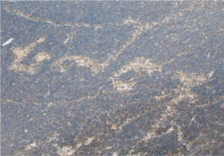 |
pāloṭaka |
Gichi Nala Brāhmī inscription 92:12 published by Oskar von Hinüber (ANP1, 1989, p. 44, no. 7a, pl. 52 DOI: https://doi.org/10.11588/diglit.36954#0106; MANP 4, 2001, pp. 257, pl. 100 DOI: https://doi.org/10.11588/diglit.37089#0275); Śrī Pāloṭṭaka is written in Brāhmī inscriptions 18.64 at Oshibat in another hand than GN 92: 12, Both inscriptions record a local ethnonym related to the name of the ruing dynasty of the Palola Ṣāhis (ANP 5: https://digi.hadw-bw.de/view/anp5), Regional names ending in oṭ(ṭ)a are well attested in Upper Indus Brāhmī inscriptions, and in this case the hypochoristic suffix -ka is added. |
Sanskrit suffix ethnonym anthroponym northern class Brāhmī |
Gichi Nala | GN092_12_IMG_0395 | |
| GN092:13_Brāhmī |
 |
+ + kulajuya + |
Gichi Nala Brāhmī inscription 92:13 published by Oskar von Hinüber (MANP 4, 2001, p. 257, pl. 100) DOI: https://doi.org/10.11588/diglit.37089#0275 Personal names with Kulajaya are written in other Brāhmī inscriptions at Gichi Nala (95:8; 157:10), Oshibat (75:2), Khomar Das (5:6, 11:1, 13:3, 30:1, 30:5, 34:1, 37:2), Gichoi Das (9:1),Thakot (114:1), and Helor Das (inscription no. 18) |
Sanskrit name compound northern class Brāhmī |
Gichi Nala | GN092_13-14_IMG_0264 | |
| GN092:14_Brāhmī |
 |
dantikaḥ caṃdra |
Gichi Nala Brāhmī inscription 92:14 published by Oskar von Hinüber (MANP 4, 2001, p. 257, pl. 100) DOI: https://doi.org/10.11588/diglit.37089#0275 O. von Hinüber identifies two personal names: Dantika and Candra |
Sanskrit nominative case name anthroponym visitor's arrival northern class Brāhmī |
Gichi Nala | GN092_13-14_IMG_0264 | |
| GN094:1_Brāhmī |
 |
1. bhaṭāraka sevaṃ ma 2. [śrī] jaiya[ne m]ṛchat. + |
Gichi Nala Brāhmī inscription 94:1 published by Oskar von Hinüber (MANP 4, 2001, p. 258, pl. 100) DOI: https://doi.org/10.11588/diglit.37089#0276 Transliteration of O. von Hinüber: 1. bhaṭāraka sevaṃ [r .]ma 2. [śrī] jaiya[ne mṛcha]tu + "The Bhaṭāraka ....[Śrī ] Jaiya- ?" While the reading of some akṣaras especially in the second line of this inscription remain uncertain , identification of the title of Bhaṭāraka at the beginning is clear. The character transliterated as [r.] between sevaṃ amd ma is not apparent in the annotated image, and a final vowel of the verb (?) [m]ṛchat[ṛ/u] is difficult to construe with an uncertain final akṣara at the end of the inscription. Presumably the personal name of the Bhaṭāraka beginning with Jaiya- follows the honorific Śrī, but reading this name is contingent on interpretation of both lines in the inscription. |
Sanskrit name appellative proper noun title honorific verb northern class Brāhmī |
Gichi Nala | GN094_1_IMG_0211 | |
| GN095:7_Brāhmī |
 |
aśokaḥ vipriḥ |
Gichi Nala Brāhmī inscription 95:7 published by Oskar von Hinüber (MANP 4, 2001, p. 259, pl. 100; also ANP 1, 1989, p. 53, no. 46) O. von Hinüber comments that the Brahmin Aśoka has the title of Vipriḥ (instead of Vipra as normally expected in Sanskrit), while in a Brāhmī inscription written in the same hand at Oshibat (18:15), Aśoka is designated as a brahmaṇa. |
Sanskrit nominative case name anthroponym title non-Buddhist religion northern class Brāhmī |
Gichi Nala | GN095_7-8_13_IMG_0094 | |
| GN095:8_Brāhmī |
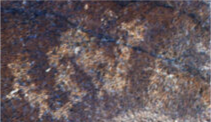 |
kulajaya |
Gichi Nala Brāhmī inscription 95:8 published by Oskar von Hinüber (MANP 4, 2001, p. 259, pl. 100) DOI: https://doi.org/10.11588/diglit.37089#0277 For more detailed commentary on Upper Indus Brāhmī inscriptions with the term kulajaya, see note on GN092:13 In this annotated image, the final -ya is not visible. |
Sanskrit nominal northern class Brāhmī |
Gichi Nala | GN095_7-8_13_IMG_0094 | |
| GN095:13_Brāhmī |
 |
cuva |
Gichi Nala Brāhmī inscription 95:13 published by Oskar von Hinüber (MANP 4, 2001, pp. 259-260, pl. 100) DOI: https://doi.org/10.11588/diglit.37089#0278 The meaning of the two Brāhmī characters is unclear |
northern class Brāhmī |
Gichi Nala | GN095_7-8_13_IMG_0094 | |
| GN095:12_Brāhmī ānanda |
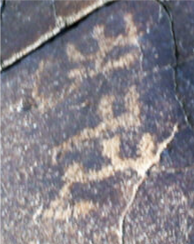 |
Gichi Nala Brāhmī inscription 95:12 published by Oskar von Hinüber (MANP 4, 2001, p. 259, pl. 100) DOI: https://doi.org/10.11588/diglit.37089#0277 Common personal name Ānanda (annotated image needs to be rotated) |
Sanskrit anthroponym Gandharan Brāhmī |
Gichi Nala | GN095_12_IMG_0046 | ||
| GN096:2_Brāhmī |
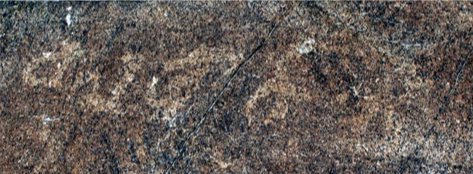 |
vala + + + |
Gichi Nala Brāhmī inscription 96:2 published by Oskar von Hinüber (MANP 4, 2001, p. 260, pl. 101) O. von Hinüber comments that Brāhmī characters following Vala- do not correspond with -vīrasya (GN102:2) , -vīrena (GN092:4 - see annotation). |
Sanskrit northern class Brāhmī |
Gichi Nala | GN096_2_IMG_9984 | |
| GN097:1_Brāhmī |
 |
/// kinīmughadata |
Gichi Nala Brāhmī inscription 97:1 published by Oskar von Hinüber (MANP 4, 2001, p. 260, pl. 101) O. von Hinüber comments that the sequence of legible Brāhmī akṣaras can not be interpreted for meaningful sense |
northern class Brāhmī |
Gichi Nala | GN097_1_IMG_9858 | |
| GN097:4_Brāhmī |
 |
visṇusena |
Gichi Nala Brāhmī inscription 97:4 published by Oskar von Hinüber (MANP 4, 2001, p. 260, pl. 101) DOI:https://doi.org/10.11588/diglit.37089#0278 Although Visṇusena (with dental s instead of retroflex ṣ in the conjunct with -ṇu) is incorrectly written, a theophoric proper name was intended. The name is written on a rock fragment partially buried in sand next to Gichi Nala rock 97. |
Sanskrit name theonym compound Tatpurusa non-Buddhist religion northern class Brāhmī |
Gichi Nala | GN097_2_4_IMG_9800 | |
| GN097:3_Brāhmī |
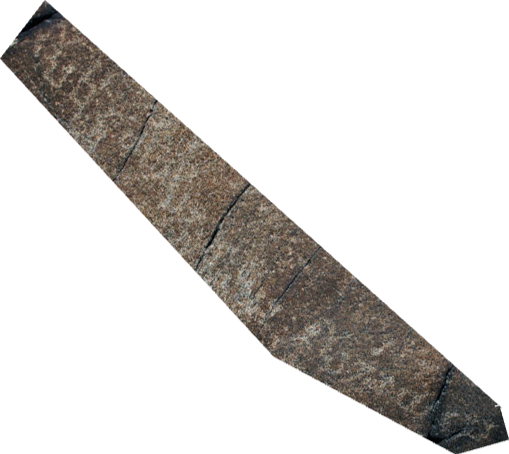 |
namo buddhāya namo [dharmāya]ḥ namo saṃghaya |
Gichi Nala Brāhmī inscription 97:3 published by Oskar von Hinüber (MANP 4, 2001, p. 260, pl. 101) 'Homage to Buddha, Dharma and Saṅgha' See annotations of GN 13:2, GN 67:12, and other inscriptions at Gichi Nala with this Buddhist formula of veneration for the three jewels (triratna). Although [dharmāya] is difficult to discern, all three elements are included in this inscription. GN 97:2 is written directly below this formula, but in a different larger hand. |
Sanskrit inflected form phrase Buddhist 'homage to' northern class Brāhmī |
Gichi Nala | GN097_3_IMG_9757 | |
| GN097:2_Brāhmī |
 |
1. /// + + + [sa]rvo śayo[dhāra] 2. yonali /// |
Gichi Nala Brāhmī inscription 97:2 published by Oskar von Hinüber (MANP 4, 2001, p. 260, pl. 101) Since two lines of this Brāhmī inscription written at the bottom of rock 97 are partially buried in the sand, it is not possible to propose a reading that is sufficient for interpretation; to the far right of the annotated image below GN 97: 3, 6 akṣaras are tentatively read as [sa]rvo śa yo dhāra, but the preceding characters in the first line and any charactes in the second line are not legible. Black-and-white photos in pl. 101 of MANP 4 reveal additional akṣaras that are not visible in the annotated image, but the initial reading by O. von Hinüber remains uncertain, |
Sanskrit phrase northern class Brāhmī |
Gichi Nala | GN097_3_IMG_9757 | |
| GN097:5_Brahmī |
 |
jayacandra: |
Gichi Nala Brāhmī inscription 97:5 published by Oskar von Hinüber (MANP 4, 2001, pp. 260-261, pl. 101) DOI: https://doi.org/10.11588/diglit.37089#0278 Initial published reading jaya[bha]rdraḥ can be revised to jayacandraḥ (as proposed by annotator in a review of Die Felsbildstationen Shing Nala und Gichi Nala (MANP 4), Bulletin of the Asia Institute 15 (2001, but appearing 2005), 206-208. |
Sanskrit nominative case name anthroponym compound name compound bahuvrihi northern class Brāhmī |
Gichi Nala | GN097_5_IMG_9850 | |
| GN099:1_Brāhmī |
 |
choṇas[ya] |
Gichi Nala Brāhmī inscription 99:1 published by Oskar von Hinüber (MANP 4, 2001, p. 261, pl. 101) "of Choṇa" O. von Hinüber comments that a break in the rock's surface before initial cho- could have resulted in loss of prior syllables of the name. The final syllable read as conjunct -sya is expected, but the ligature is formed in an unusual way, as if a subscript vowel (-u?) is attached to -y-, or another syllable (-pra or -pru?) is written at an oblique angle to the line of writing. |
Sanskrit genitive case name anthroponym northern class Brāhmī |
Gichi Nala | GN099_1_IMG_9728 | |
| GN099:2_Brāhmī |
 |
namo s.ṇa[se]na |
Gichi Nala Brāhmī inscription 99:2 published by Oskar von Hinüber (MANP 4, 2001, p. 261, pl. 101) O. von Hinüber comments that in addition to the beginning of the formula of homage with namo-, the ending in -ena (instrumental case ending) is clear. However, it is not possible to identify the name of a Bodhisattva or Tathāgata based on the characters that are not clearly legible. The initial conjunct consonant with s- could be read as spa- or spi-, according to O. von Hinüber. |
Sanskrit phrase 'homage to' northern class Brāhmī |
Gichi Nala | GN099_2_IMG_9722 | |
| GN099:3_Brāhmī |
 |
namo [suta]priyā(*ya) |
Gichi Nala Brāhmī inscription 99:3 published by Oskar von Hinüber (MANP 4, 2001, p. 261, pl. 101) It is not possible to propose a name of a Bodhisattva or Tathāgata invoked in the formula of homage beginning with Namo |
Sanskrit phrase 'homage to' northern class Brāhmī |
Gichi Nala | GN099_3-4_IMG_9712 | |
| GN099:4_Brahmī |
 |
1. prabhadata[deva] 2. kāputra |
Gichi Nala Brāhmī inscription 99:4 published by Oskar von Hinüber (MANP 4, 2001, p. 261, pl. 101) "Son of Prabhadatta-devaka" O. von Hinüber comments that the reading of -[deva] at the end of the first line of writing is uncertain and the name Prabhadata is also written in Brāhmī inscription no. 20 at Helor Das (Nasim Khan, "Rock-Carvings and Inscriptions at Helor Das" ANP 3 [1994], p. 205, photo 14 (https://doi.org/10.11588/diglit.36942#0287). Hypochristic suffix -ka preceding -putra "son of" belongs to the patronym of the writer. |
Sanskrit name patronymic Tatpurusa northern class Brāhmī suffix hypocorism compound name |
Gichi Nala | GN099_3-4_IMG_9712 | |
| GN101:1_Brāhmī |
 |
priyamitra bhikṣu |
Gichi Nala Brāhmī inscription 101:1 published by Oskar von Hinüber (MANP 4, 2001, p. 262, pl. 101) "The Monk Priyamitra" O. von Hinüber comments that the name of the monk Priyamitra is also written in another Brāhmī inscription at Gichi Nala (157:3 - with the title of ācārya instead of Bhikṣu) and at Chilas 5 (ANP 1. 1989, p. 51, no. 37b, pl. 91 https://doi.org/10.11588/diglit.36954#0113, https://doi.org/10.11588/diglit.36955#0067) . In addition to the names and titles of monks in other Brāhmī inscriptions at Gichi Nala (1574:6, 157:18), other examples include Shatial (190:1), Shing Nala (36:2) and Bargin (4). |
Sanskrit name compound name title Buddhist northern class Brāhmī |
Gichi Nala | GN101_1-3_IMG_9405 | |
| GN101:2_Brāhmī |
 |
p[r]ac[ā]ga + [ta]yaḥ |
Gichi Nala Brāhmī inscription 101:2 published by Oskar von Hinüber (MANP 4, 2001, p. 262, pl. 102) The reading of some Brāhmī akṣaras in the annotated image remains uncertain, hindering the interpretation. |
Sanskrit northern class Brāhmī |
Gichi Nala | GN101_1-3_IMG_9405 | |
| GN101:3_Brāhmī |
 |
rudraṭa + |
Gichi Nala Brāhmī inscription 101:3 published by Oskar von Hinüber (MANP 4, 2001, p. 262, pl. 102) Personal name: Rudraṭa |
Sanskrit name theonym northern class Brāhmī |
Gichi Nala | GN101_1-3_IMG_9405 | |
| GN101:4_Brāhmī |
 |
devikra + [ka] |
Gichi Nala Brāhmī inscription 101:4 published by Oskar von Hinüber (MANP 4, 2001, p. 262, pl. 102) Uncertain reading of Brāhmī akṣaras following Devi- does not permit an interpretation of tentative reading |
Sanskrit northern class Brāhmī |
Gichi Nala | GN101_4_IMG_9438 | |
| GN102:1_Brāhmī |
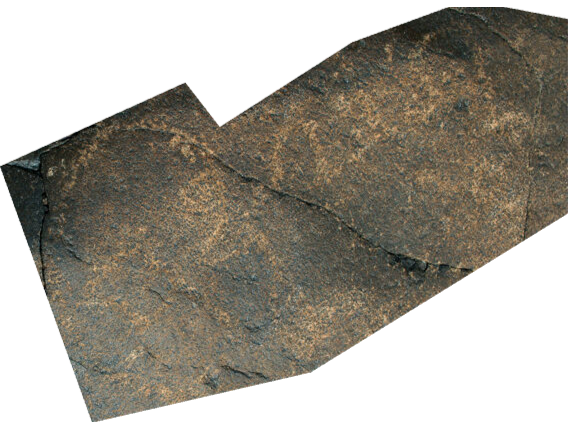 |
śrī [c]uṇa[ṣya] |
Gichi Nala Brāhmī inscription 102:1 published by Oskar von Hinüber (MANP 4, 2001, p. 262) without black-and-white photo. O. von Hinüber transliterated śrī [ch]oṇasya "of śrī Choṇa" and commented that the name is written by a different hand than GN 99:1 (see annotation). The annotated image here is a different name: Śrī Cuṇa with a genitive ending apparently written with conjunct -ṣya rather than -sya as expected. |
Sanskrit genitive case name anthroponym northern class Brāhmī |
Gichi Nala | GN102_1_IMG9240 | |
| GN102:2_Brāhmī |
 |
1. [śrī vala] /// 2. v[ī]rasya |
Gichi Nala Brāhmī inscription 102:2 published by Oskar von Hinüber (MANP 4, 2001, p. 262, pl. 102) "of Śrī Valavīra" O. von Hinüber comments that honorific śrī is effaced and any writing on the rock's corroded surface to the right of the legible inscription is not recognizable in the annotated image. See annotations of GN 92:4 and 96:2 for comments on the name Valavīra (corresponding with Sanskrit: Balavīra), but it is unclear that this inscription was written by the same hand as GN 35:1 and the others at Gichi Nala with this personal name (according to O. von Hinüber) |
Sanskrit genitive case name compound name honorific northern class Brāhmī |
Gichi Nala | GN102_2_IMG_9247 | |
| GN102:3_Brāhmī |
 |
buddhāya |
Gichi Nala Brāhmī inscription 102:3 published by Oskar von Hinüber (MANP 4, 2001, pp. 263, pl. 102), who comments that the expected formula with namo "homage to" Buddha is not written in this inscription. |
Sanskrit inflected form theonym proper noun Buddhist northern class Brāhmī |
Gichi Nala | GN102_3_IMG_9221 | |
| GN104:2_Brāhmī |
 |
j[e] brāhmaṇa(*sya) |
Gichi Nala Brāhmī inscription 104:2 published by Oskar von Hinüber (MANP 4, 2001, pp. 263, pl. 102) "(of*) the Brahmin" Brahmī nscriptions written close to the bottom of Gichi Nala rock 104 are partially covered by a higher level of sand than when the black-and-white photo on MANP 5, pl. 102 was taken. In the published photo, the final character for the genitive ending -sya is visible, but the surface of the ground is covering the Brāhmī akṣara in the annotated image. Only traces of writing belonging to Brahmī inscriptions GN104:1 (+ + +) and GN104:3 ( [vasa] + ///) are visible above and below the annotation of GN104:2. |
Sanskrit genitive case phrase title non-Buddhist religion northern class Brāhmī |
Gichi Nala | GN104_1-3_IMG_9174 | |
| GN105:1_Brāhmī |
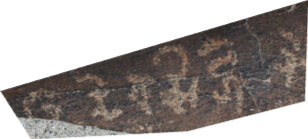 |
1. #devasiṅgene 2. /// |
Gichi Nala Brāhmī inscription 105:1 published by Oskar von Hinüber (MANP 4, 2001, p. 263, pl. 102) "by Devasiṅga" O. von Hinüber comments on the loss of aspiration in the compound name Devasiṅga (corresponding to to Sanskrit: Devasiṅgha) as well as the instrumental case terminating in -ene instead of expected -ena, and points out that Devasiṅga's name is also written in a Brāhmī inscription at Hodar (69:31) but in Proto-Śāradā rather than Gandharan Brāhmī. The second line of Brāhmī writing read by O.v. Hinüber as + varma (visible in MANP 4, pl. 102) is no longer visible in the annotated image due to the higher level of sand in the annotated image. |
Sanskrit inflected form name anthroponym compound name northern class Brāhmī |
Gichi Nala | GN105_1-2_IMG_9123 | |
| GN105:2_Brāhmī [dubha] |
 |
Gichi Nala Brāhmī inscription 105:2 published by Oskar von Hinüber, who comments that the akṣaras may be script imitation. The uncertain reading is made more difficult by the encroachment of a higher level of sand onto the bottom of Gichi Nala rock 105. |
illegible northern class Brāhmī |
Gichi Nala | GN105_1-2_IMG_9123 | ||
| GN106:4_Brāhmī [saga] + [dha] |
 |
Gichi Nala Brāhmī inscription 106:4 published by Oskar von Hinüber, who comments that the compound name beginning Saga- could correspond with a Buddhist personal name (Sanskrit: Saṅgha-), since loss of aspiration is not uncommon in other Upper Indus Brāhmī inscriptions. The final syllable could be -va instead of -dha. |
Sanskrit Buddhist name compound northern class Brāhmī |
Gichi Nala | GN106_4_IMG_9013 | ||
| GN106:7_Brāhmī |
 |
1. prīrthavi 2. g[o]pā[la] + |
Gichi Nala Brāhmī inscription 106:7 published by Oskar von Hinüber, who comments on the word prīrthivi (corresponding to Sanskrit pṛthivī "earth") which exhibits linguistic features of metathesis of -r- (a characteristic of Dardic languages in modern northern Pakistan). The writing in the second line of the inscription is not clearly connected with the first, and the reading of g[au] [p]ā [ṇa] is very uncertain due to cracks in the surface of the rock (O. von Hinüber suggests that the vowel diacritic with three lines above g- could be frivolous, but the next akṣara is clearly read as -pā- in the annotated image, and the third akṣara uncertainly read as [ṇa] could also be -la, in which case reading g[o]pā[la] + can not be considered |
Sanskrit word nominal northern class Brāhmī |
Gichi Nala | GN106_7_IMG_8894 | |
| GN108:4_Brāhmī |
 |
# bhar[ja]sya |
Gichi Nala Brāhmī inscription 108:4 published by Oskar von Hinüber, who comments that the name "of Bharja" does not allow a semantic interpretation. The siddhaṃ symbol (transliterated as #) preceding the name is difficult to make out in the annotated image, and its occurrence with a personal name without outside of the context of a religious formula (such as # namo ...) seems unusual. |
Sanskrit genitive case name anthroponym northern class Brāhmī |
Gichi Nala | GN108_4-6_IMG_8655 | |
| GN108:6_Brahmī |
 |
kulabhaga grihati |
published by Oskar von Hinüber (MANP 4, 2001, p. 265, pl. 102) with the reading: [kula]dh[ra]gagrihati, with alternative reading ku[la]bhaga grihati proposed by annotator in a review of Die Felsbildstationen Shing Nala und Gichi Nala (MANP 4) in Bulletin of the Asia Institute 15 (2001, but 2005), p. 208. The revised reading would result in an expression meaning "[he] attains prosperity for [his] family." Although I am not ware of the compound kulabhaga as a standard term, it would be analogous to the common term kuladharma ("the Dharma of a particular family or lineage," Patrick Olivelle, ed., David Brick and Mark McClish, Associate eds., A Sanskrit Dictionary of Law and Statecraft, Delhi: Primus Books, 2015). The verb form grihati in hybrid Sanskrit (standard Sanskrit gṛhṇāti from the root grah) reflects thematization of athematic verb classes (O.v. Hinüber, Das Ältere Mittelindisch im Überblick, 2nd rev. ed., Vienna: Österreichischen Akademie der Wissenschaften, 2001, p. 290, §449). |
Sanskrit phrase verb nominal compound Tatpurusa utilitarian northern class Brāhmī |
Gichi Nala | GN108_4-6_IMG_8655 | |
| GN111:2_Brāhmī |
 |
prasābha[du]viṣṭ[i]vīra |
Gichi Nala Brāhmī inscription 111:2 published by Oskar von Hinüber (MANP 4, 2001: p. 266, pl. 102) A personal name with a compound ending in vīra is written but the semantic sense of the preceding naming elements remains uncertain |
Sanskrit name compound anthroponym compound name Brāhmī northern class Brāhmī |
Gichi Nala | GN111_2_IMG_8538 | |
| GN111:8_Brahmī |
 |
[śrī] + + /// |
Gichi Nala Brāhmī inscription 111:8 published by Oskar von Hinüber (MANP 4, 2001: p. 266, pl. 102) Traces of at least 3 Brāhmī akṣaras following śrī + + /// are visible in the annotated image, but the reading remains uncertain due to the condition of the rock's surface and curvature |
Sanskrit honorific northern class Brāhmī |
Gichi Nala | GN111_6-8_IMG_8491 | |
| GN111:7_Brāhmī |
 |
+ [śūdī]ka |
Gichi Nala Brāhmī inscription 111:7 published by Oskar von Hinüber (MANP 4, 2001: p. 266, pl. 102) ; O. von Hinüber reads /// [śūryaka] but the penultimate syllable before the hypocoristic suffix -ka (likely ending of a proper name) seems more clearly -dī- (vowel diacritic -ī is included in the outline). However, the preceding syllable (or syllables) written before [śū] are unclear, so it is not yet possible to clarify an identification of the name. |
Sanskrit suffix name anthroponym hypocorism northern class Brāhmī |
Gichi Nala | GN111_6-8_IMG_8491 | |
| GN111:6_Brāhmī |
 |
śrī [.o] /// |
Gichi Nala Brāhmī inscription 111:6 published by Oskar von Hinüber without a proposed reading (MANP 4, 2001: p. 266, pl. 102) Śrī- is legible, followed by the vertical of a consonant with an -o vowel ligature, but traces of other characters probably belonging to a proper name remain unclear |
Sanskrit honorific northern class Brāhmī |
Gichi Nala | GN111_6-8_IMG_8491 | |
| GN111:9_Brāhmī |
 |
dha[ra]ka |
Gichi Nala Brāhmī inscription 111:9 published by Oskar von Hinüber (MANP 4, 2001: p. 266, pl. 102), identifying Dharaka as a shortened form of a proper name, but commenting that the reading is very uncertain. O. von Hinüber comments that 111:10 inscription (?? and 111:11 unclear could have traces of writing belonging to inscriptions or script imitations, but corresponding images or photos are not indicated in the catalogue published in MANP 4. Therefore outlines are not attempted on the annotated image. |
Sanskrit name suffix anthroponym hypocorism northern class Brāhmī |
Gichi Nala | GN111_9-11_IMG_8492 | |
| GN111:12_Brāhmī |
 |
nama[t]ikṣasya |
Gichi Nala Brāhmī inscription 111:12 published by Oskar von Hinüber (MANP 4, 2001: p. 267, pl. 103), identifies the personal name Namatikṣa, while commenting that perhaps nama bhikṣusya could have been meant. |
Sanskrit genitive case name anthroponym northern class Brāhmī |
Gichi Nala | GN111_12_IMG_8602 | |
| GN113:1_Brāhmī |
 |
varāha "Varāha" |
Sanskrit name appellative theonym non-Buddhist religion northern class Brāhmī |
Gichi Nala | GN113_1-6_IMG_8506 | ||
| GN113:2_Brāhmī |
 |
yajayaśa "Yajayaśa" |
Sanskrit name anthroponym compound name compound northern class Brāhmī |
Gichi Nala | GN113_1-6_IMG_8506 | ||
| GN113:3_Brāhmī |
 |
dharma[ś.]+ "Dharma-ś-?" |
Sanskrit name appellative proper noun compound Buddhist northern class Brāhmī |
Gichi Nala | GN113_1-6_IMG_8506 | ||
| GN113:4_Brāhmī |
 |
dha [.i] ka + di ḍi + ma + + ta + + + + |
northern class Brāhmī illegible |
Gichi Nala | GN113_1-6_IMG_8506 | ||
| GN113:4_Brāhmī |
 |
so[laḥ] |
Sanskrit northern class Brāhmī |
Gichi Nala | GN113_1-6_IMG_8506 | ||
| GN113:6_Brāhmī |
 |
dharadhim[ā] |
Sanskrit word or phrase northern class Brāhmī middle Brāhmī proper noun |
Gichi Nala | GN113_1-6_IMG_8506 | ||
| GN113:7_Brāhmī |
 |
namo budhā(*ya) "homage to Buddha" |
Sanskrit inflected form phrase Buddhist 'homage to' northern class Brāhmī |
Gichi Nala | GN113_7-11_IMG_8054 | ||
| GN116:2_Brāhmī |
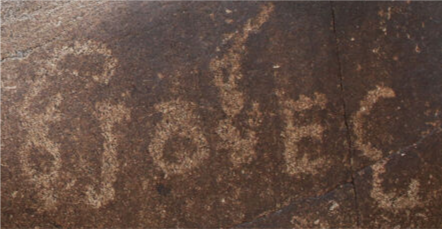 |
vīravarmā jaṭṭa "Vīravarma the Jāṭ" |
Sanskrit name appellative anthroponym compound name title compound Gandharan Brāhmī ethnonym |
Gichi Nala | GN116_2_IMG_7820 | ||
| GN117:1_Brāhmī ratninī |
 |
ratninī "Ratninī" |
Sanskrit name anthroponym appellative northern class Brāhmī |
Gichi Nala | GN117_1_IMG_7803 | ||
| GN118:6_Brāhmī va[kṣi]+ |
 |
va[kṣi]+ |
northern class Brāhmī |
Gichi Nala | GN118_6_IMG_7634 | ||
| GN129:1_Brāhmī |
 |
[ādamokṣe] |
Sanskrit northern class Brāhmī |
Gichi Nala | GN129_1_IMG_6781 | ||
| GN130:4_Brāhmī |
 |
vājika[sya] "[of] Vājika" |
Sanskrit genitive case name anthroponym Gandharan Brāhmī |
Gichi Nala | GN130_4-5_IMG_6822 | ||
| GN142:2_Brāhmī |
 |
[namo buddhāya] ["homage to Buddha"] |
Sanskrit inflected form word or phrase phrase Buddhist 'homage to' northern class Brāhmī |
Gichi Nala | GN142_2-5_IMG_6681 | ||
| GN142:3_Brāhmī |
 |
nā[bhi]kesya "of Nābhike" |
Sanskrit genitive case name proper noun anthroponym northern class Brāhmī |
Gichi Nala | GN142_2-5_IMG_6681 | ||
| GN143:4_Brāhmī |
 |
jīvavarmma jaṭṭa rudraśa[nn]i "Jīvavarmma, the Jāṭ Rudraśanni" |
Sanskrit ethnonym asterism/nakṣatra compound name Gandharan Brāhmī Tatpurusa |
Gichi Nala | GN142_2-5_IMG_6681 | ||
| GN142:5_Brāhmī |
 |
illegible |
illegible northern class Brāhmī |
Gichi Nala | GN142_2-5_IMG_6681 | ||
| GN143:1_Brahmī |
 |
[uvadeva] |
Sanskrit name compound theonym northern class Brāhmī |
Gichi Nala | GN143_1_IMG_6713 | ||
| GN144:1_Brāhmī |
 |
mitrārjunasya "of Mitrārjuna" |
Sanskrit genitive case name theonym compound Tatpurusa Gandharan Brāhmī |
Gichi Nala | GN144_1_IMG_6512 | ||
| GN144:2_Brāhmī |
 |
tharaṅgasena "Tharaṅgasena" |
Sanskrit proper noun anthroponym Tatpurusa name hybrid-language name compound name Gandharan Brāhmī |
Gichi Nala | GN144_2-7_IMG_6506 | ||
| GN144:3_Brāhmī |
 |
laḍasya "of Laḍa" |
Sanskrit genitive case name anthroponym northern class Brāhmī |
Gichi Nala | GN144_2-7_IMG_6506 | ||
| GN144:5_Brāhmī |
 |
jayadāsa "Jayadāsa" |
Sanskrit proper noun name anthroponym compound name Tatpurusa northern class Brāhmī |
Gichi Nala | GN144_2-7_IMG_6506 | ||
| GN144:6_Brāhmī |
 |
rudroṭa spavara "Rudroṭa Spavara" |
Sanskrit name proper noun anthroponym hybrid-language name northern class Brāhmī |
Gichi Nala | GN144_2-7_IMG_6506 | ||
| GN147:7_Brāhmī |
 |
dharmaspāla śūra: "Dharmaspāla the Śūra" |
Gāndhārī name proper noun compound name hybrid-language name title Gandharan Brāhmī |
Gichi Nala | GN144_2-7_IMG_6506 | ||
| GN144:8_Brāhmī |
 |
makhārjunaḥ prāptaḥ "Makhārjuna arrived" |
Sanskrit nominative case name compound name hybrid-language name motion verb samprāpta-type visitor's arrival Gandharan Brāhmī |
Gichi Nala | GN144_2-7_IMG_6506 | ||
| GN144:9_Brāhmī |
 |
śrī dāsa "Śrī Dāsa" |
Sanskrit name proper noun anthroponym honorific northern class Brāhmī |
Gichi Nala | GN144_2-7_IMG_6506 | ||
| GN144:10_Brāhmī |
 |
candraspāla "Candraspāla" |
Sanskrit name compound name hybrid-language name Tatpurusa Gandharan Brāhmī |
Gichi Nala | GN144_2-7_IMG_6506 | ||
| GN144:11_Brāhmī |
 |
jinaspala "Jinaspāla" |
Sanskrit name compound name hybrid-language name Tatpurusa Gandharan Brāhmī |
Gichi Nala | GN144_2-7_IMG_6506 | ||
| GN145:1_Brāhmī |
 |
prajāpati [ "Prajāpati ..."" |
Sanskrit name theonym Tatpurusa northern class Brāhmī |
Gichi Nala | GN145_1-2_IMG_6405 | ||
| GN145:2_Brāhmī |
 |
nār[ī]kasya "of Nārīka" |
Sanskrit genitive case hypocorism name northern class Brāhmī |
Gichi Nala | GN145_1-2_IMG_6405 | ||
| GN145:3_Brāhmī |
 |
madhusena "Madhusena" |
Sanskrit name theonym Tatpurusa Gandharan Brāhmī |
Gichi Nala | GN145_3_IMG_6418 | ||
| GN145:5_Brāhmī |
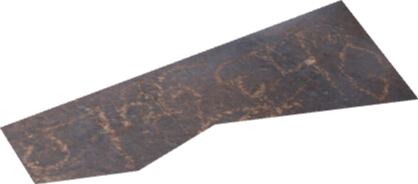 |
gaṇoṭṭaputra "son of Gaṇoṭṭa" |
Sanskrit name patronymic hybrid-language name compound name Gandharan Brāhmī |
Gichi Nala | GN145_5-6_IMG_6498 | ||
| GN145:6_Brāhmī |
 |
da[tta]śrīrāmaḥ Dattaśrīrāma |
Sanskrit nominative case proper noun theonym compound name honorific non-Buddhist religion Gandharan Brāhmī |
Gichi Nala | GN145_5-6_IMG_6498 | ||
| GN145:7_Brāhmī |
 |
mādaṣṭhaka "Mādaṣṭhaka" |
Sanskrit name northern class Brāhmī |
Gichi Nala | GN145_7-8_12_IMG_6322 | ||
| GN145:9_Brāhmī |
 |
[svā]nīśasya "of Svānīśa" |
Sanskrit genitive case name anthroponym northern class Brāhmī superimposed |
Gichi Nala | GN145_9_IMG_6360 | ||
| GN145:10_Sogdian |
 |
m[wnδβ] | Gichi Nala Sogdian inscription 145:10 published by Nicholas Sims-Williams (1992: 21, no. 604) with the comment ""Quite uncertain." |
Sogdian Sogdian |
Gichi Nala | GN145_10_IMG_6336 | |
| GN146:1_Brāhmī |
 |
vāsubhadraḥ "Vāsubhadra" |
Sanskrit nominative case name theonym compound Gandharan Brāhmī |
Gichi Nala | GN146_1-2_IMG_6223 | ||
| GN146:2_Brāhmī |
 |
jayami |
Sanskrit word or phrase proper noun anthroponym northern class Brāhmī |
Gichi Nala | GN146_1-2_IMG_6223 | ||
| GN148:1_Brāhmī |
 |
śrī karāḍa[ka] "Śrī Karāḍaka" |
Sanskrit proper noun name hypocorism honorific Gandharan Brāhmī |
Gichi Nala | GN148_1_IMG_6215 | ||
| GN149:1_Brahmī |
 |
yaśasya [ |
Sanskrit genitive case name anthroponym northern class Brāhmī |
Gichi Nala | GN149_1_IMG_6172 | ||
| GN150:1_Brāhmī |
 |
śūloṭa "Śūloṭa" |
Sanskrit name hybrid-language name Gandharan Brāhmī |
Gichi Nala | GN150_1-6_IMG_6119 | ||
| GN150:2_Brāhmī |
 |
būḍhaka "Būdhaka" |
Sanskrit name hypocorism northern class Brāhmī Gandharan Brāhmī |
Gichi Nala | GN150_1-6_IMG_6119 | ||
| GN150:3_Brāhmī |
 |
bhīmaka "Bhīmaka" |
Sanskrit name anthroponym hypocorism Gandharan Brāhmī |
Gichi Nala | GN150_1-6_IMG_6119 | ||
| GN150:5_Brāhmī |
 |
[mo]raṣe[ṇa] "Moraṣeṇa" |
Sanskrit name compound name Tatpurusa northern class Brāhmī |
Gichi Nala | GN150_1-6_IMG_6119 | ||
| GN150:8_Brāhmī |
 |
śrī śak[r]abhūtasya nityaṃ [na] + "of Śrī Śakrabhūta always" |
genitive case word or phrase name compound name honorific bahuvrihi Gandharan Brāhmī |
Gichi Nala | GN150_3_4_6_8-10-11_IMG_6125 | ||
| GN150:9_Brāhmī |
 |
illegible |
northern class Brāhmī illegible |
Gichi Nala | GN150_3_4_6_8-10-11_IMG_6125 | ||
| GN150:10_Brāhmī |
 |
śrī jīvadharma "Śrī Jīvadharma" |
Sanskrit name compound name Tatpurusa honorific Buddhist Gandharan Brāhmī |
Gichi Nala | GN150_3_4_6_8-10-11_IMG_6125 | ||
| GN150:11_Brāhmī |
 |
+ + [.o] ma [sya] |
Sanskrit genitive case illegible northern class Brāhmī |
Gichi Nala | GN150_3_4_6_8-10-11_IMG_6125 | ||
| GN151:1_Brāhmī |
 |
# vīradatasya "of Vīradata" |
Sanskrit genitive case name Tatpurusa compound Gandharan Brāhmī |
Gichi Nala | GN151_1-3_IMG_6078 | ||
| GN151:2_Brāhmī? |
 |
illegible |
illegible |
Gichi Nala | GN151_1-3_IMG_6078 | ||
| GN151:3_Brāhmī |
 |
+ .e na ve ma [si] /// |
northern class Brāhmī |
Gichi Nala | GN151_1-3_IMG_6078 | ||
| GN152:1_Brāhmī |
 |
1. # śrī ve + 2. v[er]ṇasya "of śrī Ve ? verṇa" |
Sanskrit genitive case honorific name northern class Brāhmī |
Gichi Nala | GN152_1_IMG_6035 | ||
| GN153:4_Brāhmī |
 |
lośvara + "Lośvara" |
Sanskrit name northern class Brāhmī |
Gichi Nala | GN153_4-5_IMG_1481 | ||
| GN153:5_Brāhmī |
 |
prajāpati "Prajāpati" |
Sanskrit name theonym northern class Brāhmī Tatpurusa |
Gichi Nala | GN153_4-5_IMG_1481 | ||
| GN154:2_monogram? |
 |
monogram |
Gichi Nala | GN154_2-4_IMG_5930 | |||
| GN154:3_Brāhmī |
 |
[ra] + [dha] tna |
northern class Brāhmī |
Gichi Nala | GN154_2-4_IMG_5930 | ||
| GN154:6_Brāhmī |
 |
puñña[ka] bhikṣu "monk Puññaka" |
Sanskrit suffix name hypocorism title Buddhist Gandharan Brāhmī northern class Brāhmī |
Gichi Nala | GN154_06-11_IMG_5794 | ||
| GN154:7_Brāhmī |
 |
kalaśaga "Kalaśaga" |
Sanskrit name compound name northern class Brāhmī Gandharan Brāhmī |
Gichi Nala | GN154_06-11_IMG_5794 | ||
| GN154:8_Brāhmī |
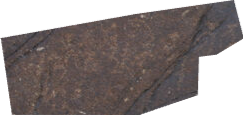 |
illegible |
illegible Brāhmī |
Gichi Nala | GN154_06-11_IMG_5794 | ||
| GN154:9_Brāhmī |
 |
śilaprava + ḥ "Śilaprabha" |
Sanskrit nominative case name compound name Tatpurusa northern class Brāhmī |
Gichi Nala | GN154_06-11_IMG_5794 | ||
| GN154:10_Brāhmī |
 |
anantabal[o] "Anantabala" |
Sanskrit name compound Tatpurusa northern class Brāhmī |
Gichi Nala | GN154_06-11_IMG_5794 | ||
| GN154:15_Brāhmī |
 |
1. [bala]śr. 2. /// gataḥ "[Balaśrī] came/went" |
Sanskrit inflected form name proper noun honorific 'came'/'went' ('here') visitor's arrival northern class Brāhmī Gandharan Brāhmī |
Gichi Nala | GN154_06-11_IMG_5794 | ||
| GN154:14_Brāhmī |
 |
śrī hima + + + + + /// "Śrī Hima- ..." |
Sanskrit name honorific northern class Brāhmī Gandharan Brāhmī |
Gichi Nala | GN154_14_IMG_5876 | ||
| GN155:4_Hebrew |
 |
1. + + + br + + el 1. bnymn br šmw'l 2. ywsf br 'l 'zr[y] "... son of ...-el, Benuman, son of Samuel, Joseph, son of Eli'ezri" | Gichi Nala Hebrew inscription 155:4 published with comment by Theodore Kwasman (MANP 4, 2001, pp. 291, pl. 107) was discovered by Karl Jettmar in 1982 (K. Jettmar, with a contribution by Theodore Kwasman, "Hebrew Inscriptions in the Western Himalayas" In Orientalia Iosephi Tucci Memoriae Dicata, edited by G. Gnoli and L. Lanciotti, 667-670. Serie Orientale Roma 56.2. Rome: IsMEO, 1987). According to Gary Rendsburg (private communication, 2020), this list of names and patronyms (with Aramaic br [vocalized to "bar"] in place of Hebrew ben was fully integrated in Hebrew patronymics, and Benuman is a variant form of Benjamin. The transliteration of the first line is by Gary Rendsburg, whose English translation is also adopted. |
Judæo-Persian name anthroponym patronymic non-Buddhist religion Perso-Arabic script |
Gichi Nala | GN155_4_IMG_1451 | |
| GN157:4_Brāhmī |
 |
1. kajakārikānaṭikaḥ mṛgoṭṭikāṃ 2. yabhati "The actor, Kajakārikā, has sexual intercourse with Mṛgoṭṭikā" | Gichi Nala Brāhmī inscription 157:4 published by Oskar von Hinüber (MANP 4, 2001, p. 291, pl. 105). Due to the curvature of the rock's surfaces where this inscription is written, the annotated image is a composite of multiple 2D photos. Reading and translation follows O.v. Hinüber (in German): "Der Schauspieler [naṭīkaḥ] Kajakārikā futuit [yabhati] die Mṛgoṭṭikā." Hinüber comments on the uncertainty of the masculine or feminine gender pf the actor/actress named Kajakārikā, and observes that Mṛgoṭṭikā is a rarely attested female name in Upper Indus inscriptions. The verb yabhati also occurs in Shatial Brāhmī inscription 35:1. While yabhati is clearly written below Mṛgoṭṭikāṃ to the right side of a crack in the rock's surface, the signs to the left of the crack below Kajakārikā are not legible as writing (see separate annotation of GN 157:5) |
Sanskrit inflected form nominative case name proper noun anthroponym hybrid-language name compound name title verb Gandharan Brāhmī hypocorism |
Gichi Nala | GN157_4-5_IMG_5717_5720_5737 | |
| GN157:5_pseudo-inscription |
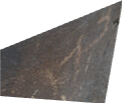 |
Written directly below the name Kajakarikā in Gichi Nala Brāhmī inscription 157:4 (see annotation of the image), these signs are on legible as writing and could have been an attempt to imitate Brāhmī script, according to O.v. Hinüber (MANP 4, 2001: p. 291, pl. 107). |
pseudo-inscription |
Gichi Nala | GN157_4-5_IMG_5717_5720_5737 | ||
| GN157:6_BrāhmI |
 |
vicarati rako + sya "Raka (?) wanders ..." | Gichi Nala Brāhmī inscription 157:6 published by Oskar von Hinüber (MANP 4, 2001: 291, pl. 105). The personal name beginning Rako- following the verb vicarati ("wanders" - also see annotation of Gichi Nala Brāhmī inscription 18:2) is difficult to read because the third akṣara is damaged by a crack in the rock's surface. O.v. Hinüber suggests restoring (*ṭṭa) for reconstructing the name as Rakoṭṭasya, but comments that final -sya could have been intended as -mya instead. It is difficult to understand the syntax of a genitive construction with the verb of motion. |
Sanskrit inflected form name motion verb visitor's arrival northern class Brāhmī |
Gichi Nala | GN157_6-7_IMG_5681 | |
| GN157:7_Brāhmī |
 |
# sādha "together with" | Gichi Nala Brāhmī inscription 157:7 published by Oskar von Hinüber (MANP 4, 2001: 291, pl. 105) may have been intended as the beginning of another inscription (compare # sārdhaṃ "together with ..." in 157:8 on the other side of a crack in the rock's surface to the upper left of this inscription). |
Sanskrit phrase northern class Brāhmī |
Gichi Nala | GN157_6-7_IMG_5681 | |
| GN157:8_Brāhmī |
 |
1. # sārdhaṃ sarvadatasya 2. # kṛtaṃ mayā pravāse 3. putrī valavīrenaḥ 4. # sārddhaṃ valacandrena 5. sā + rddhaṃ s[u]mata + 6. ṇena + + + + + "Made by me, Valavīra, son (daughter?) of Pravāse, together with Sarvadata, Valacandra and Sumata ..." | Gichi Nala Brāhmī inscription 157:8 published by Oskar von Hinüber (MANP 4, 2001: 291-291, pl. 105) records the arrival of Valavīra, whose name is also written in other Brāhmī inscriptions at Gichi Nala (see annotations of GN 35:1, 92:4, 102:2). In this inscription, Valavīra is described as pravāse putrī (literally "daughter of Pravāse") instead of pravāsa-putra (the patronymic "son of Pravasa"), as in GN 92:4. O.v. Hinüber comments that Pravāse is probably the matronym (rather than patronym) of the mother of both Valavīra and possibly Valacandra, who may have been a pair of brothers whose traveling companions included Sarvadata (in the first line of the inscription following # sārdhaṃ), Sumata (in the fifth line), and another visitor whose name is illegible (in the sixth line). |
Sanskrit inflected form genitive case name anthroponym compound name verb visitor's arrival Gandharan Brāhmī |
Gichi Nala | GN157_8_IMG_5671 | |
| GN157:9_Brāhmī_incomplete |
 |
# sā | Incomplete Gichi Nala Brāhmī inscription 157:9 published by Oskar von Hinüber (MANP 4, 2001: 292, pl. 105) can be compared with GN 157:7, as both may have been intended to begin a formula of arrival with Sanskrit # sārdhaṃ ("together with ..."). |
Sanskrit northern class Brāhmī |
Gichi Nala | GN157_9-10_IMG_5686 | |
| GN157:10_Brāhmī |
 |
kulajaya "Kulajaya" | Gichi Nala Brāhmī inscription 157:10 published by Oskar von Hinüber (MANP 4, 2001: p, 292, pl. 105). Kulajaya is attested in other Brahmī inscriptions at Gichi Nala (92:13 as kulajuya; 95:8), Oshibat (18:46; 75:2), Khomar Das (5:6, 11:1, 13:3, 30:1, 30:5, 34:1, 37:2), Thakot (114:1), and Helor Das (no. 18, referring to other attestations at Helor Das and Thor North 117:22). While the meaning of the compound's components ("victory of the family") is clear, the function of this expression is not apparent. With regards to kulajaya written next to a stupa 13:4 at Khomar Das, O.v. Hinüber comments "... the word or words kula or kulo jaya of uncertain meaning can be read, which occur elsewhere, mostly on top of inscribed boulders" (ANP 1, 1989: 57, pl. 115). In this case, kulajaya is written above Brahmī inscription 157:8 but in a different hand, which would not suggest a connection with the record of visitors' arrival. |
Sanskrit compound northern class Brāhmī |
Gichi Nala | GN157_9-10_IMG_5686 | |
| GN157:11_Brāhmī |
 |
# balattrāda yaśattrāda "Balattrāda (and) Yaśattrāda" | Gichi Nala Brāhmī inscription 157:11 published by Oskar von Hinüber (MANP 4, 2001: 292, pl. 106) records the names Balattrāda and Yaśattrāda, who were likely to have been a pair of bothers, like Valavīra and Valacandra in GN 157:8. O.v. Hinüber comments on names in compounds ending with "half Middle Indic forms -trāta and -trāda" (in the annotated image, -ttrāda is fairly clear, with gemination of -tt-), Although this naming element is used for Kṣatriyas, in GN 157:20 Puśyatrāta is designated as a Brahmin (see annotation). |
Sanskrit name anthroponym compound name Gandharan Brāhmī |
Gichi Nala | GN157_11_IMG_5673 | |
| GN157:19_Brāhmī |
 |
śrī pu[ṣ]yadeva + + [mitra] "Śrī Puṣyadeva ..." | Gichi Nala Brāhmī inscription 157:19 published by Oskar von Hinüber (MANP 4, 2001: 293, pl. 106), who comments that it is uncertain whether or not additional characters follow the compound name ending with -mitra. The asterism (constellation name) Puṣya- is common in Indian names, with a feminine form of Puṣyadeva attested in an early Brāhmī inscription from Bharhut (Lüders 1963: 59, no. A 120: Pusadevaya dānaṃ "gift of Pusadevā [Puṣyadevā]). |
Sanskrit name asterism/nakṣatra anthroponym compound name honorific Gandharan Brāhmī |
Gichi Nala | GN157_19-20_IMG_5606_curated | |
| GN157:20_Brāhmī |
 |
puṣyatrāta brāhmaṇaḥ "The Brahmin Puṣyatrāta" | Gichi Nala Brāhmī inscription 157:20 published by Oskar von Hinüber (MANP 4, 2001: 293, pl. 106), who comments that the Brahmin(s) Puṣyatrāta and Puṣyadeva (in GN 157:19 - see annotation) could have been a pair of brothers (also see annotations on GN 157:8 and GN 157:11). Although the naming component -trata is used in compounds to denote Kṣatriya status, here Puṣytrāta is designated as a Brahmin. Varṇa designations are uncommon, but sometimes are attested in Brāhmī inscriptions at Gichi Nala and other Upper Indus complexes (see O.v. Hinüber 1989: 52-3 [ANP 1] for other examples. |
Sanskrit nominative case anthroponym asterism/nakṣatra compound name title Gandharan Brāhmī |
Gichi Nala | GN157_19-20_IMG_5606_curated | |
| GN157:22_Brāhmī |
 |
satyabala "Satyabala" | Gichi Nala Brāhmī inscription 157:22 published by Oskar von Hinüber (MANP 4, 2001: 293, pl. 106) comments on compound names with -bala as a naming component. |
Sanskrit name anthroponym compound name bahuvrihi northern class Brāhmī |
Gichi Nala | GN157_22_IMG5600_curated | |
| GN145:13_Urdu |
 |
"Shāh Nawāz" |
Urdu name Urdu orthography |
Gichi Nala | GN145_4_IMG_6377 | ||
| GN145:13_Romanized abbreviation |
 |
Latin script word or phrase |
Gichi Nala | GN145_5-6_IMG_6498 | |||
| GN145:14_Urdu_dates |
 |
Urdu name year Urdu orthography Latin script |
Gichi Nala | GN145_10_IMG_6336 | |||
| GN106:4_Brāhmī |
 |
saga + dha |
Gichi Nala Brāhmī inscriptions 1o6:3-4 published by Oskar von Hinüber (MANP 4, 2001, p. 264, pl. 102) O. von Hinüber comments that Saga- could belong to proper name beginning with the Buddhist naming component Saṅgha- with loss of aspiration |
northern class Brāhmī name Buddhist |
Gichi Nala | GN106_3-4_IMG_9016 |

